Nature Conservation Stories
We are so inspired by the many members of the global nature journaling community who help care for nature through a huge variety of conservation and stewardship projects. Thanks to the folks shown here who shared their stories with us! We want to share more stories, so if you have a story we should know about, let us know here.

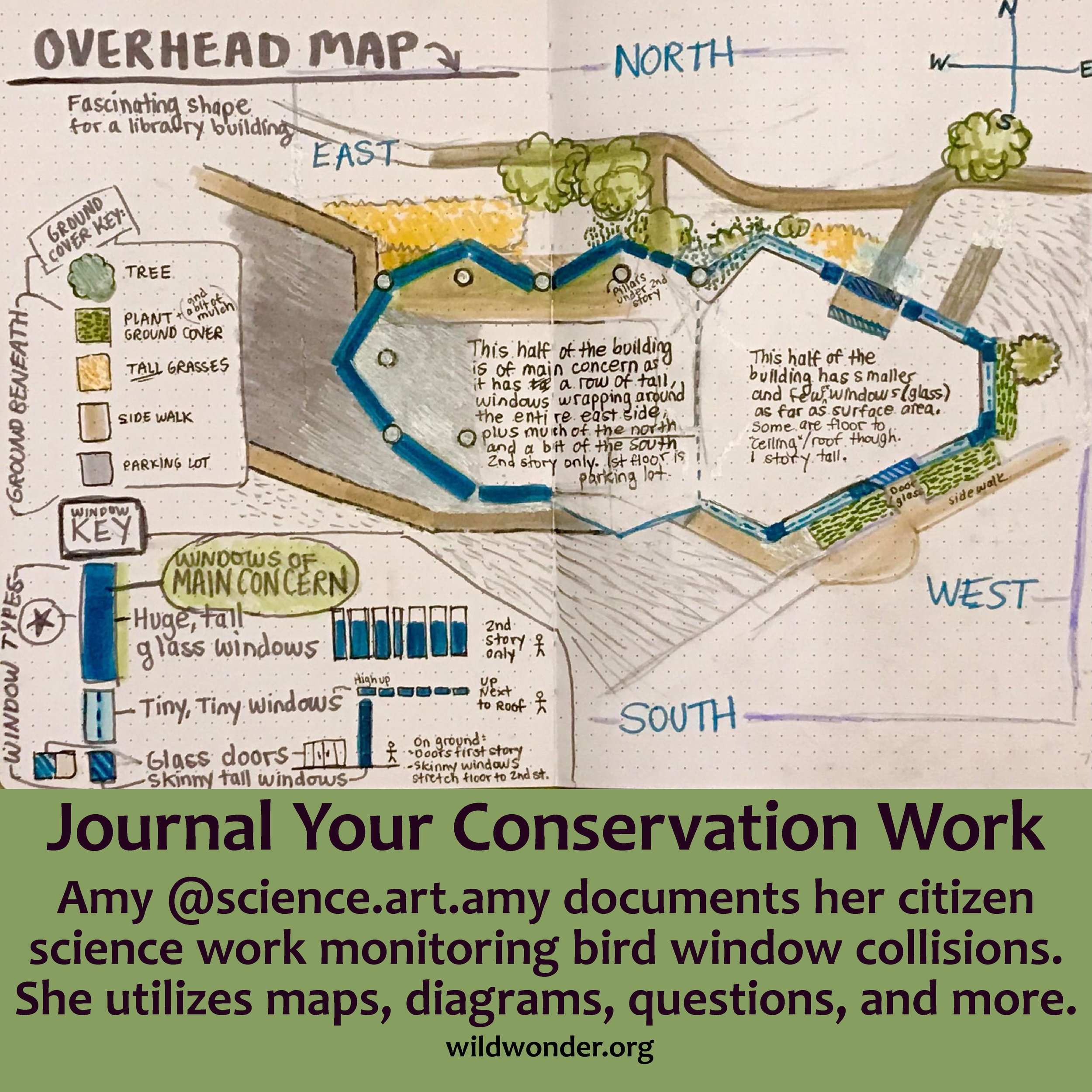
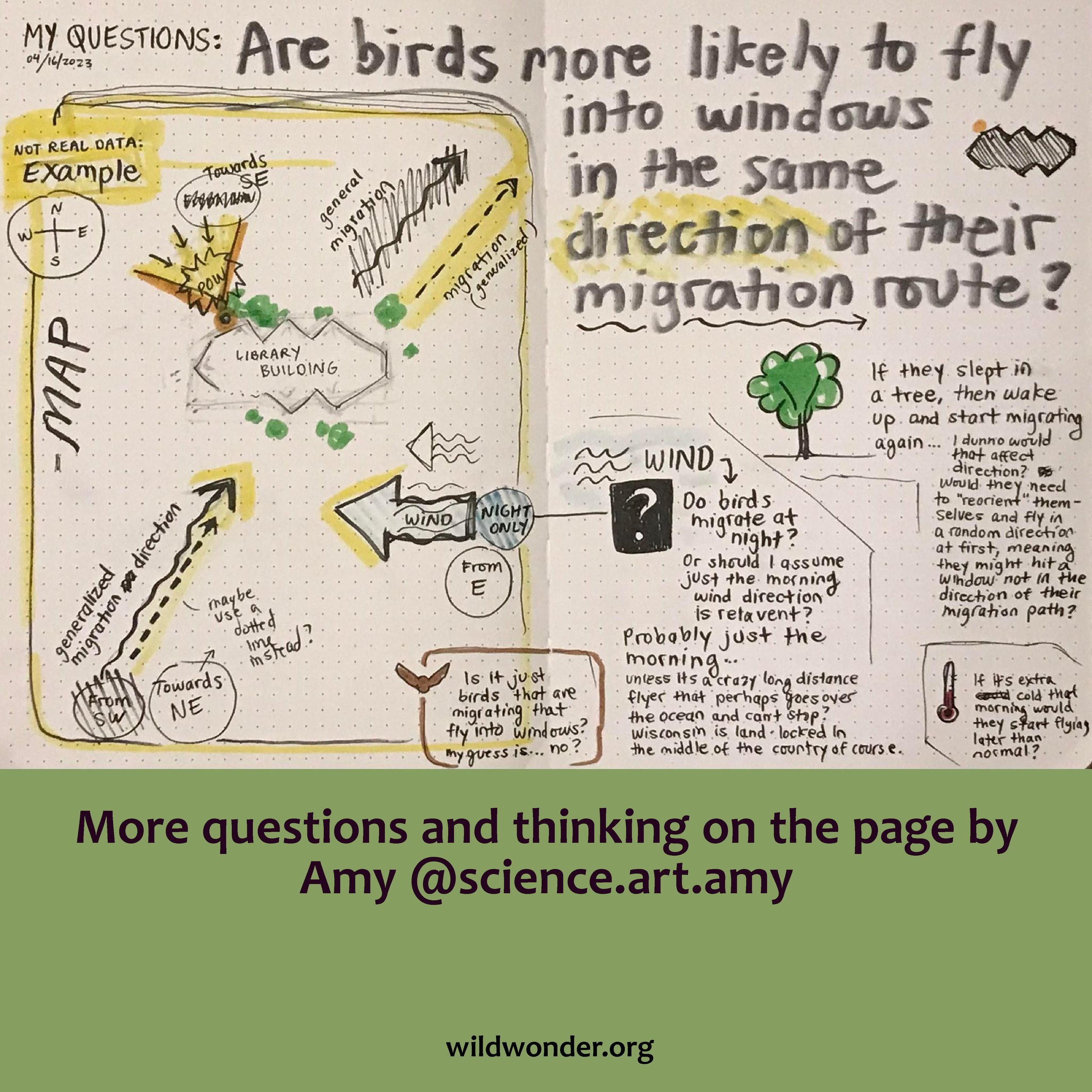
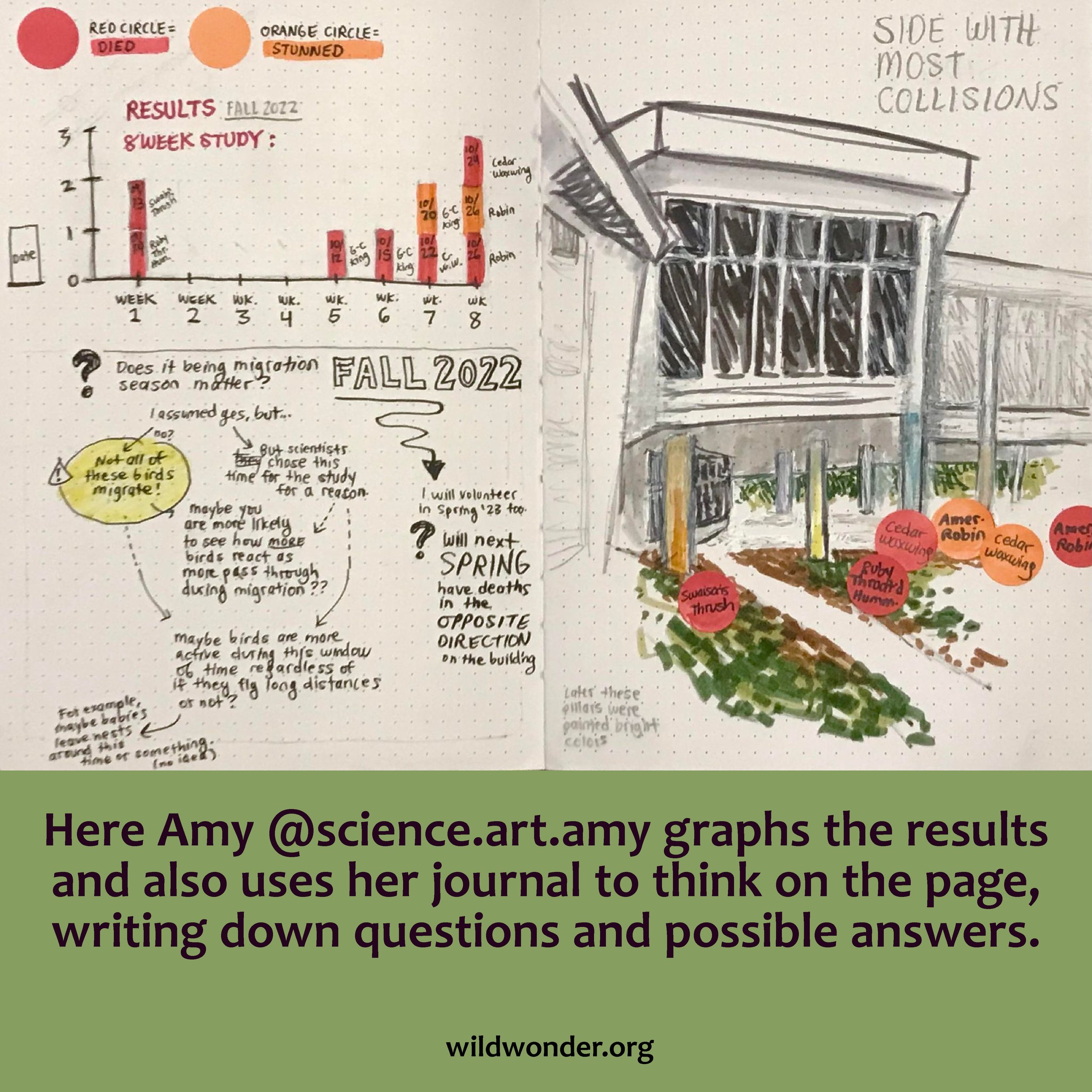


Amy Schleser is a volunteer with a local organization that tracks bird window strikes. “Every spring and fall I walk around the same building to see if any birds have hit its windows,” she says. “I like knowing that my nature observations can actually help scientists.. It’s part of a citizen science project. I use my nature journal to write down the data for the project, and also sketch the birds and scrawl out my questions. I love sketching my theories, making maps, and trying to find patterns in the data. It’s sad to find dead birds, but getting to sketch them is a way to remember them and learn about them. The data that you gather serves as evidence—it’s what organizations need to argue for new ordinances and laws that can protect wildlife,” says Amy.
Amy also volunteers with several other citizen science projects, such as Bald Eagle nest monitoring, aquatic invasive species monitoring, and Monarch Watch, in which volunteers catch and tag monarchs with stickers to track their migration path. The stickers have instructions for people that find them on how to record the location.
Check out this fascinating talk by Amy about her citizen science / conservation work and how her nature journaling is part of it.
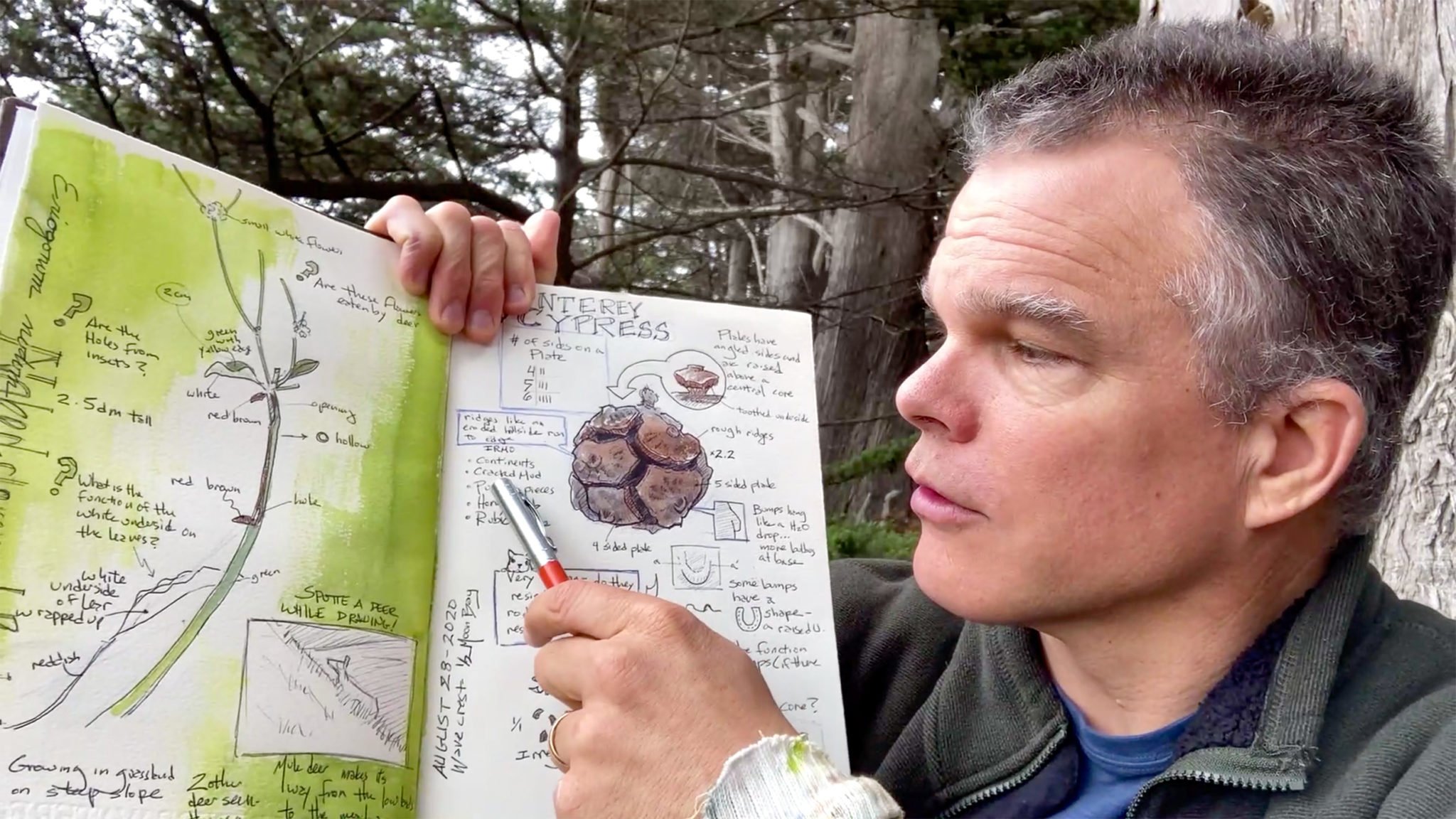
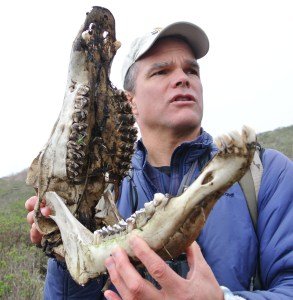

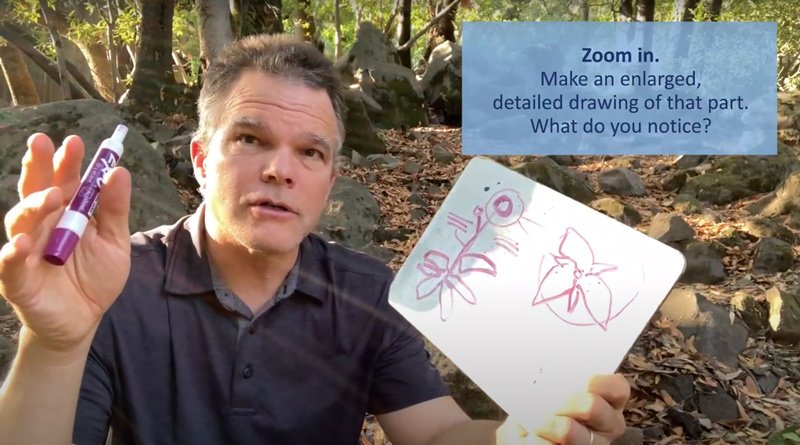
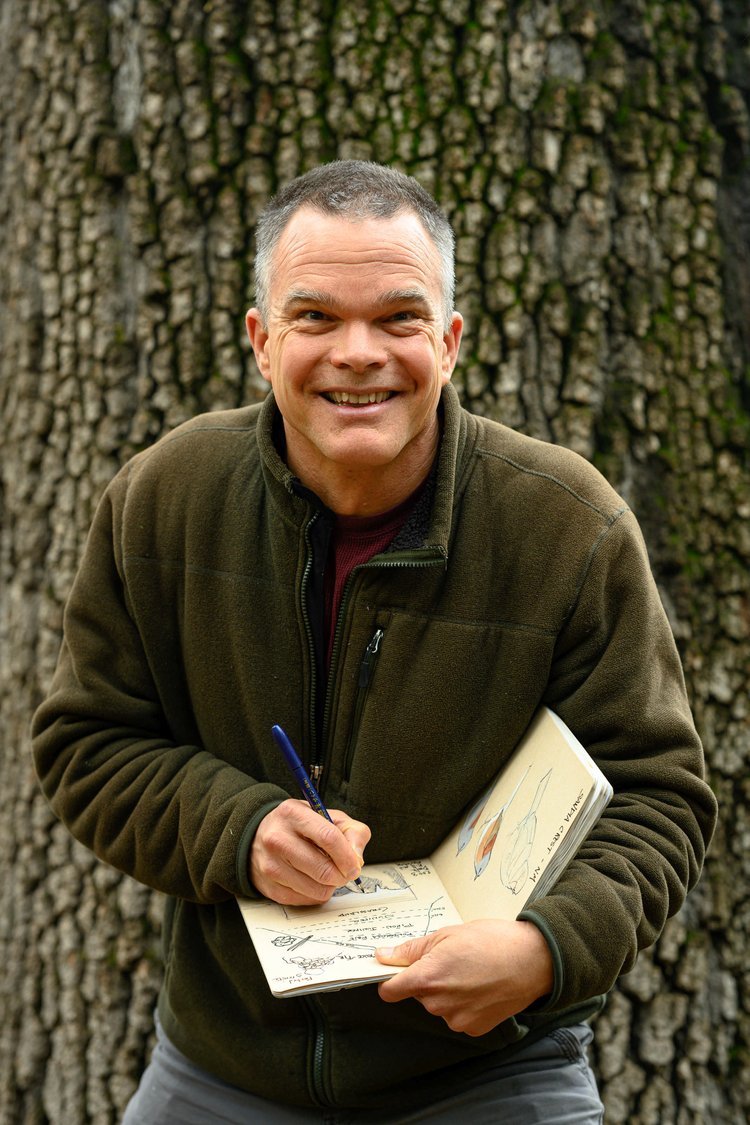
John Muir Laws has spent 40 years of his life sharing his love of nature with others, and inspiring them to connect with nature through journaling. Over the four decades of his career, Jack has written and illustrated field guides, developed numerous free resources, given away thousands of hours of drawing and journaling tutorials, volunteered his time to numerous nonprofits, donated hundreds of hours of his time training educators to help students connect with nature, and donated the use of his natural science illustrations to numerous environmental organizations for signage and brochures that help people better understand and connect with nature.


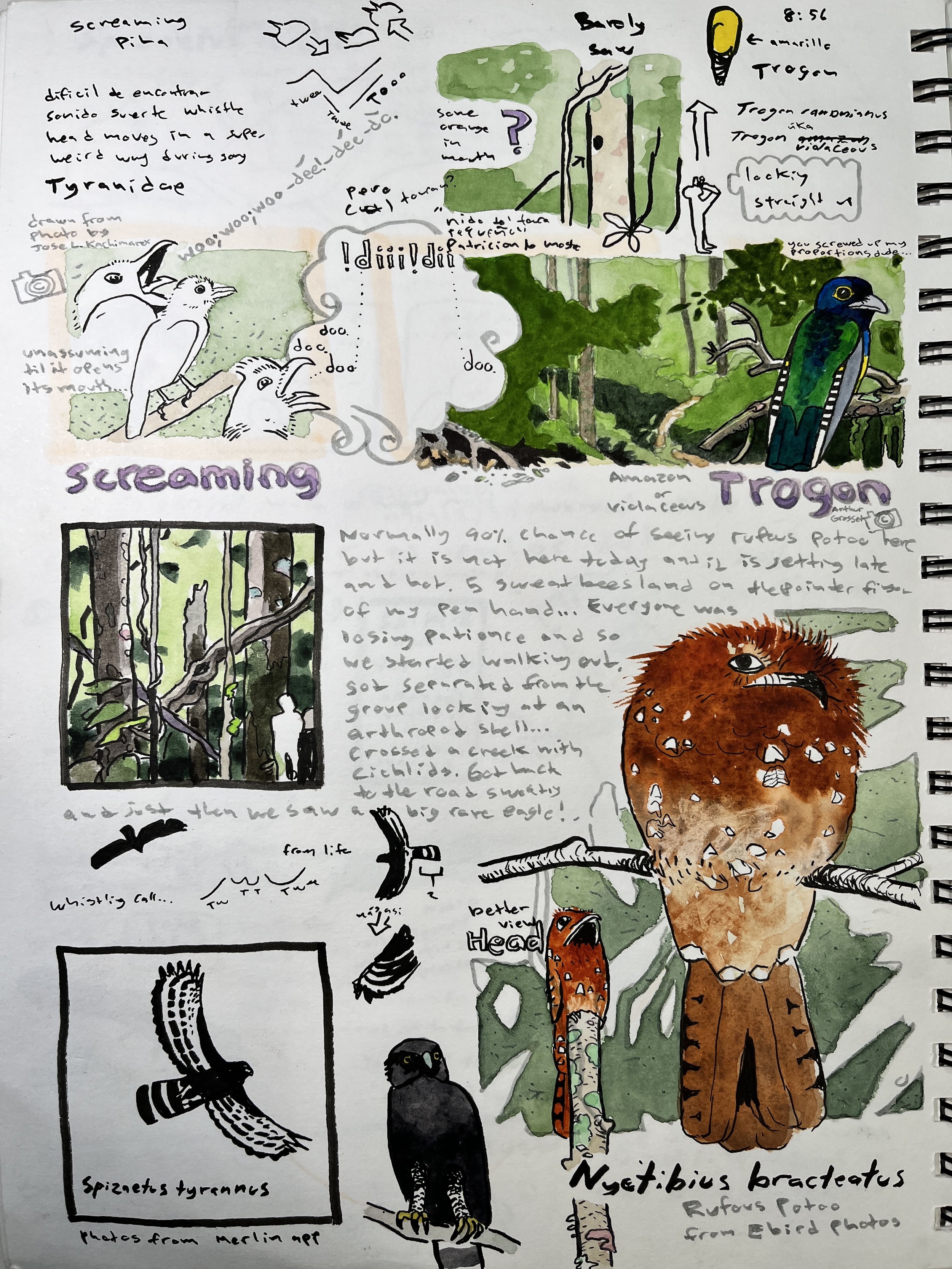
Marley Peifer is a nature journal educator and YouTuber who is convinced that nature journaling has a role to play in helping save the world’s vanishing biodiversity. Since a young age, he has been passionate about trying to heal the human-nature relationship, mostly with a focus on sustainable agriculture and land management. However, when Marley learned about nature journaling from John Muir Laws in 2013, he realized that it could play a crucial role in helping save our species and the planet. After that turning point, Marley has dedicated his life to nature journal education and has led hundreds of nature journaling trips and classes in California, Central America, the Ecuadorean Amazon, and the Galápagos archipelago. In July 2022, the Wild Wonder Foundation donated 10 Spanish-language copies of The Laws Guide to Nature Drawing and Journaling to a library in the Galapagos Islands (seen in the photo above). Marley, who was in the Galapagos co-leading a nature journaling trip with John Muir Laws, worked with a local librarian who added them to the collection and made them available to the community. He also taught several classes to local educators and community members.
Marley is committed to bringing the powerful tools of nature journaling to biologists, conservation workers, and everyday citizens in the mega-biodiverse parts of the world where we have the most to lose. “Can nature journaling be more than just an art hobby? Can it help people on the front lines of conservation and research tell a more compelling story about how we can save these endangered ecosystems? Can nature journaling play an important role during the sixth great extinction that is currently taking place? How can we get nature journaling into the hands of the people that need it the most? These are the questions that keep me awake at night,” says Marley.

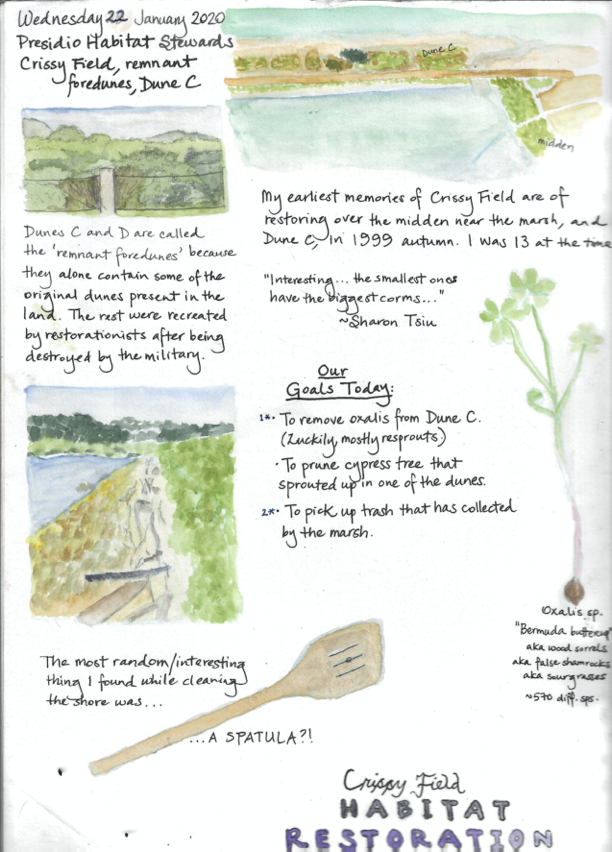
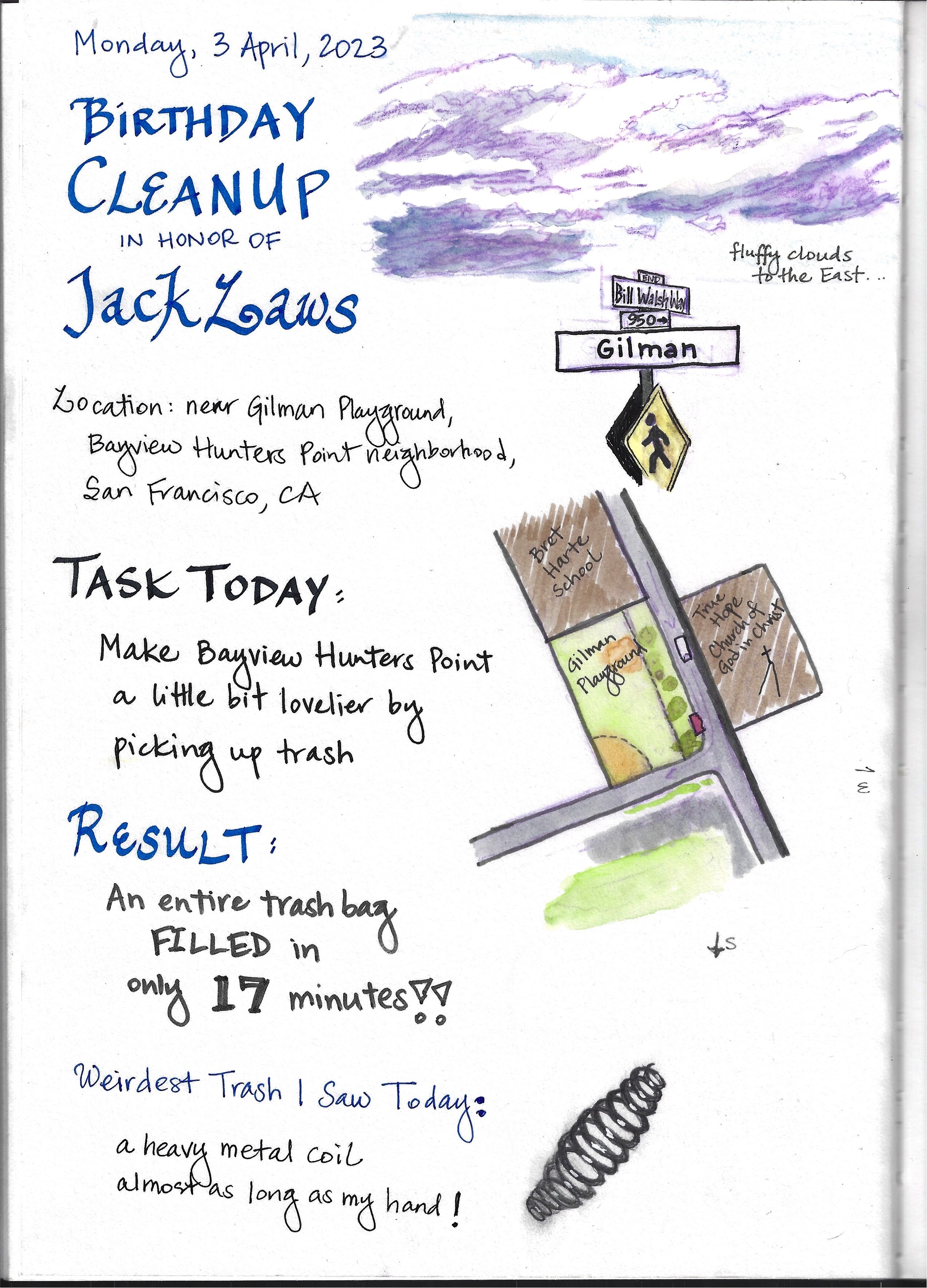
Yvea Moore began volunteering as a habitat restoration steward when she was 13 years old, taking part in the transformation of Crissy Field from an old Army base into a thriving wetland. This work sparked a lifelong passion and led to many subsequent projects dedicated to stewardship of the environment. This San Francisco native returned to her roots the year before the pandemic started, now with nature journaling as an innovative additional tool to document and communicate her restoration work. As an individual site steward in the Presidio of San Francisco, Yvea tends and extensively journals her work in a recovering coastal scrub ecosystem. Since 2002, she has also had a “Birthday Nature Cleanup” tradition, where she chooses a natural area each year on her birthday and invites others to help her clean it up. Other folks in the nature journaling community have now adopted this tradition, most notably John Muir Laws! One of the images above is a nature journal page Yvea created after a birthday cleanup for John Muir Laws’ birthday in 2023.
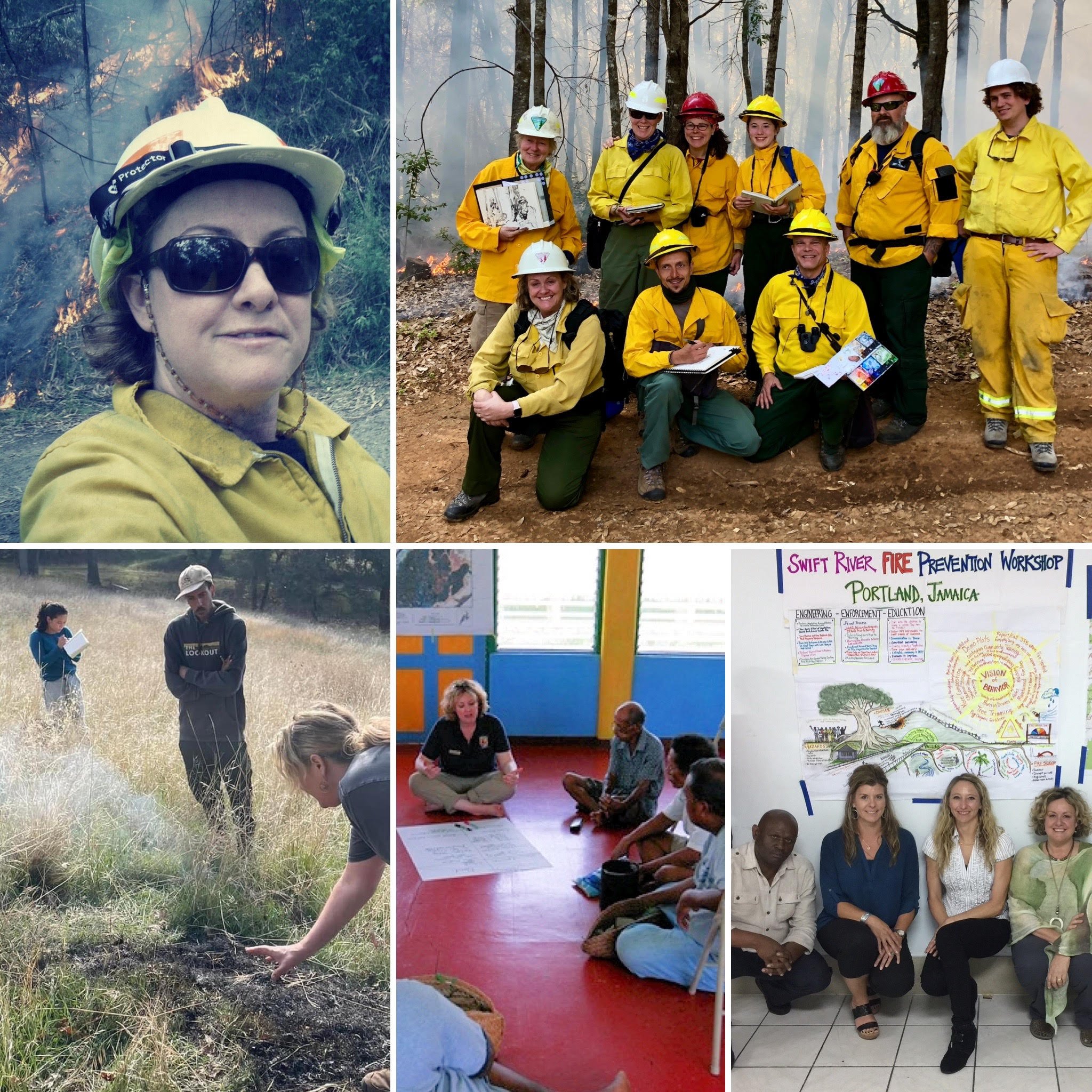

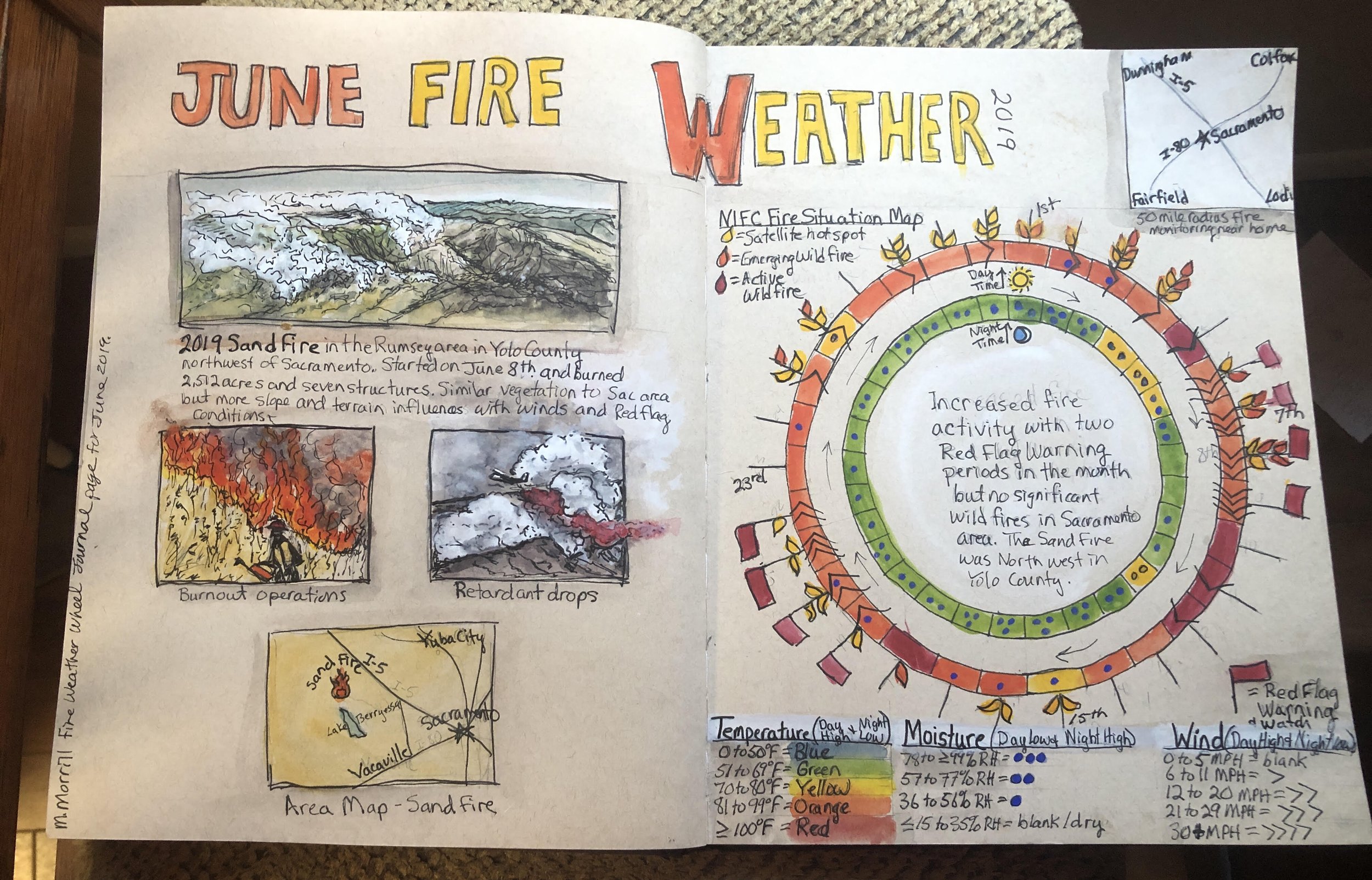
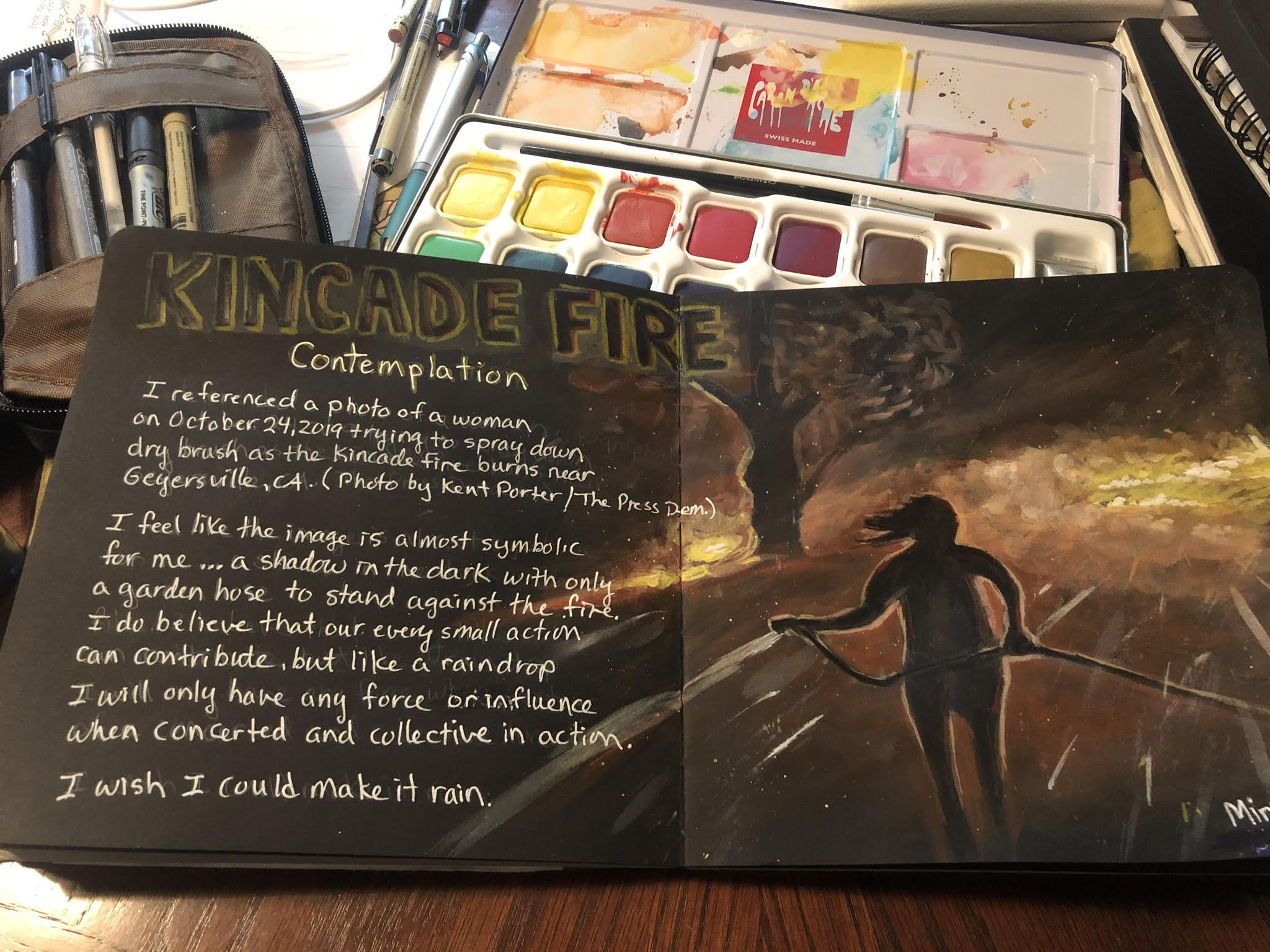
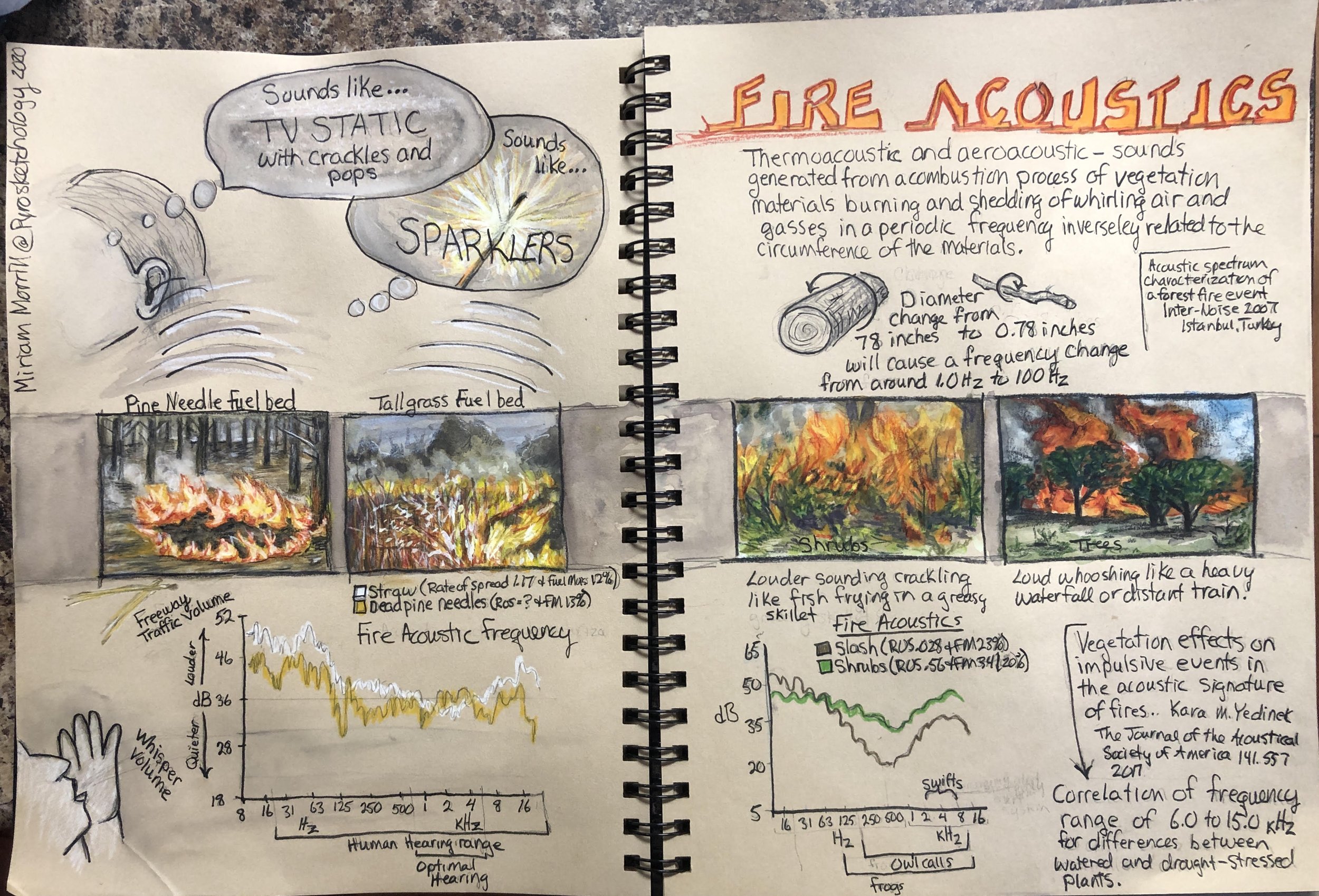

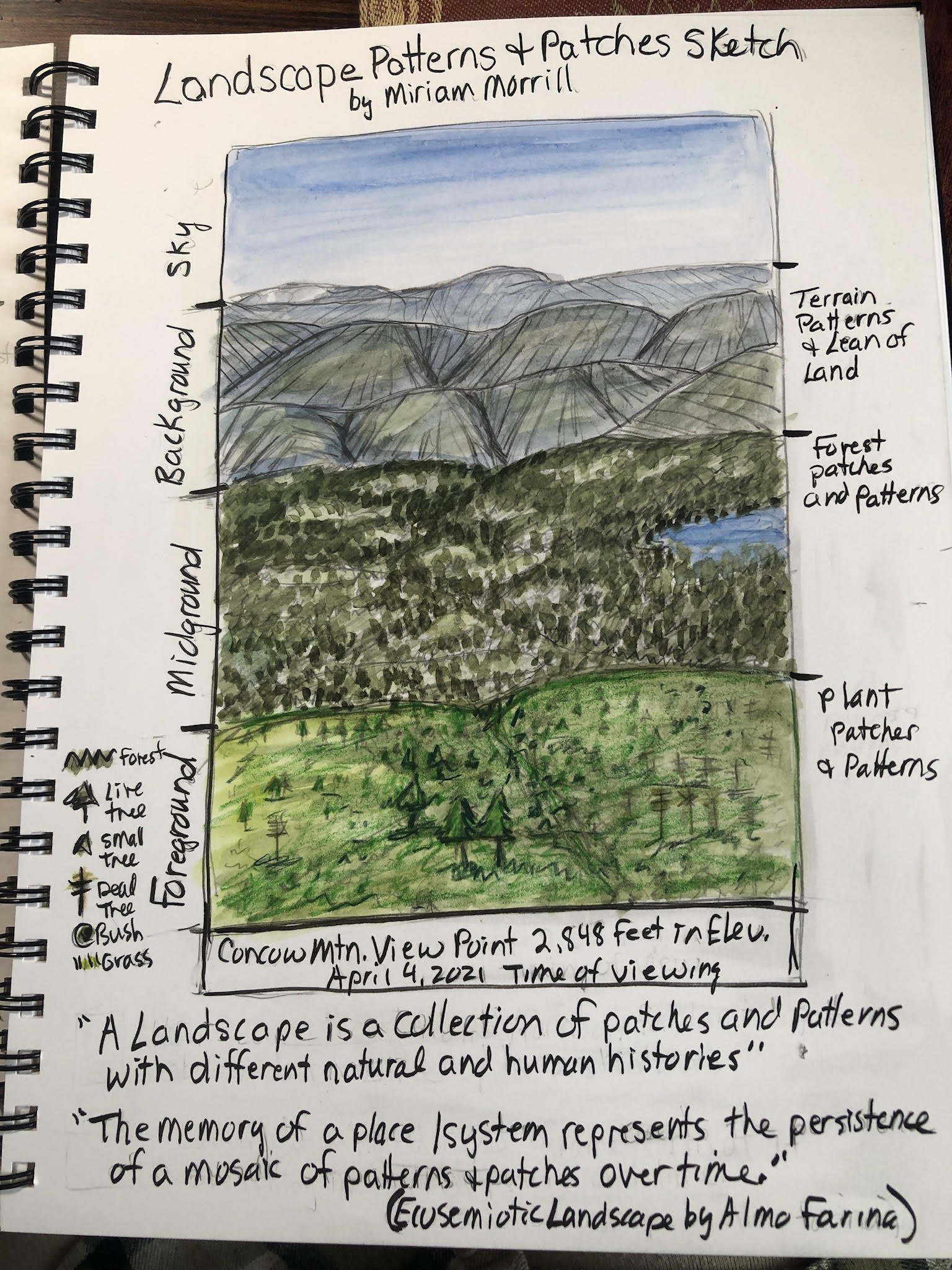
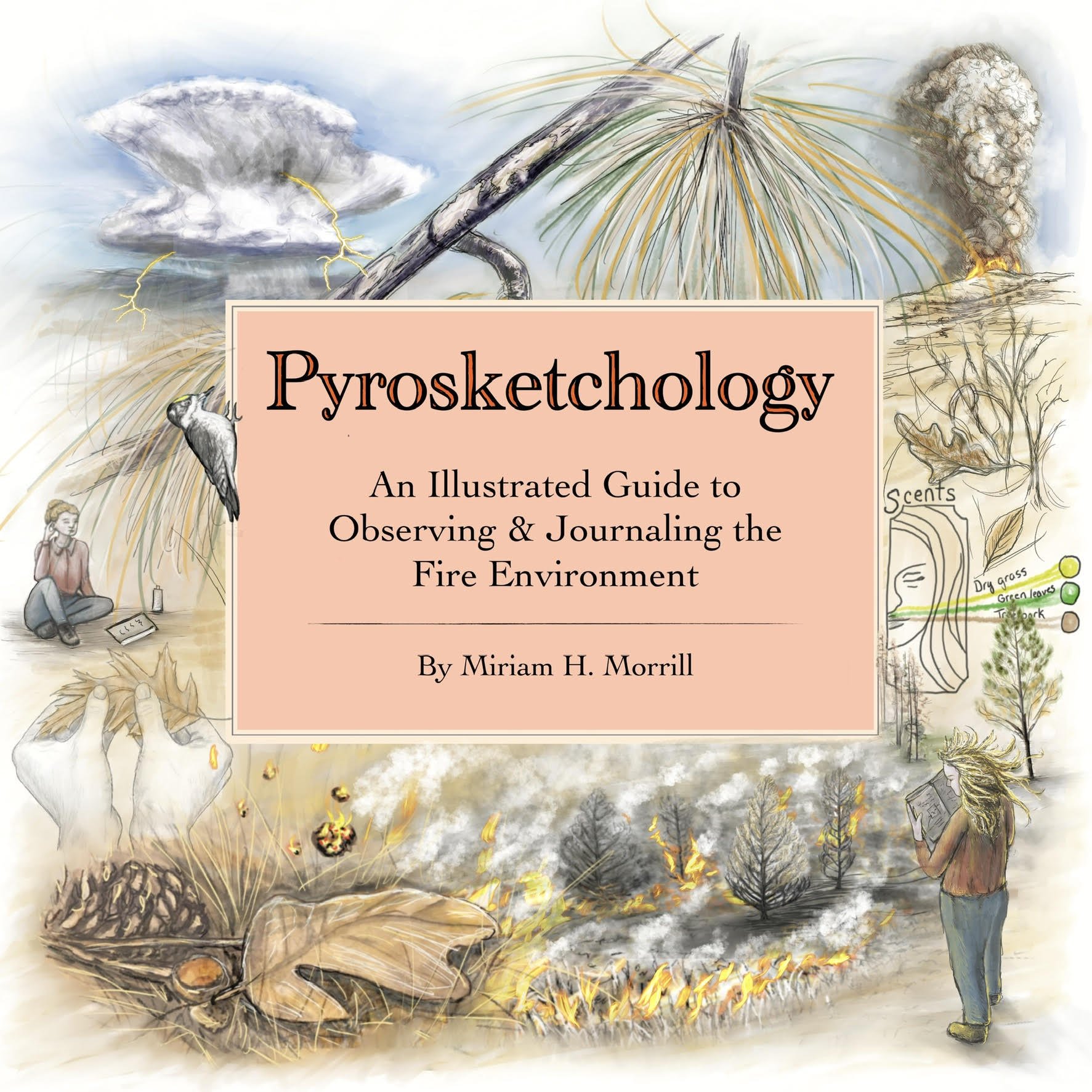
Miriam Morrill retired after 27 years working for the federal government as an environmental biologist, fire management specialist, and fire communicator in California and other western states. In 2018, she became a member of the Nature Journal Club with the initial goals of learning a more mobile art technique and reconnecting her relationship with nature. After reading The Laws Guide to Nature Drawing and Journaling and attending several field trips with John Muir Laws, she realized that nature journaling was more than just a field sketching practice; it is a powerful learning tool. She spent several years exploring how to use nature journaling as a tool for developing an understanding and awareness of the fire environment. In 2019, Miriam partnered with Robin Lee Carlson, John Muir Laws, and a number of fire management partners in Northern California on the first prescribed fire journaling workshop. Since then, she has provided fire journaling workshops to the International Association of Wildland Fire, the National Fire Learning Network, and Fire Adapted Communities, the Nature Conservancy’s Prescribed Fire Training Exchange program, and various local fire education and training collaboratives. In March 2024, Miriam published Pyrosketchology: An Illustrated Guide to Observing and Journaling About the Fire Environment, also available in a free PDF on her website, to help support fire organizations, educators, and any individuals interested in learning and adapting to fire as a part of the environment through the practice of observation and journaling.
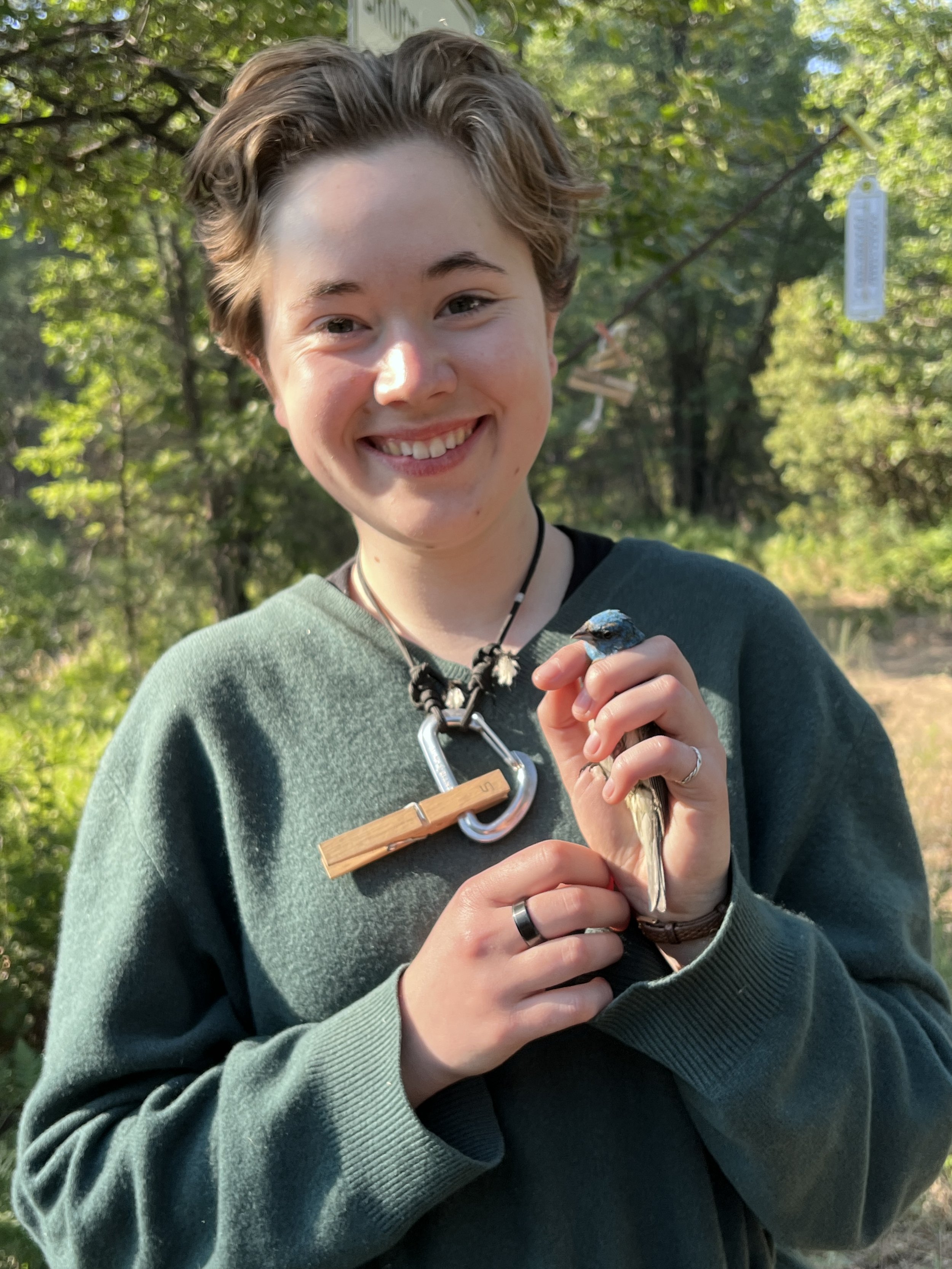
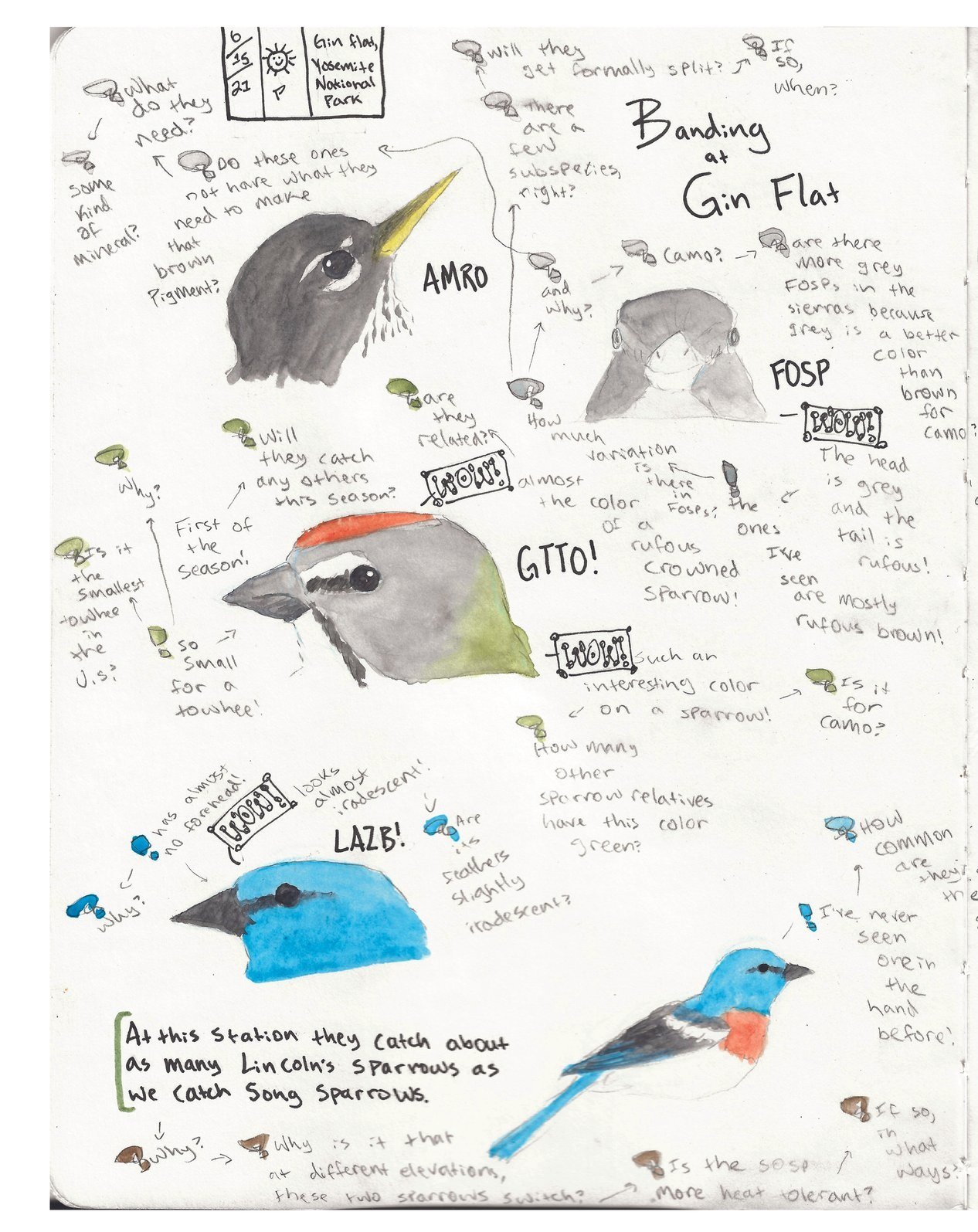
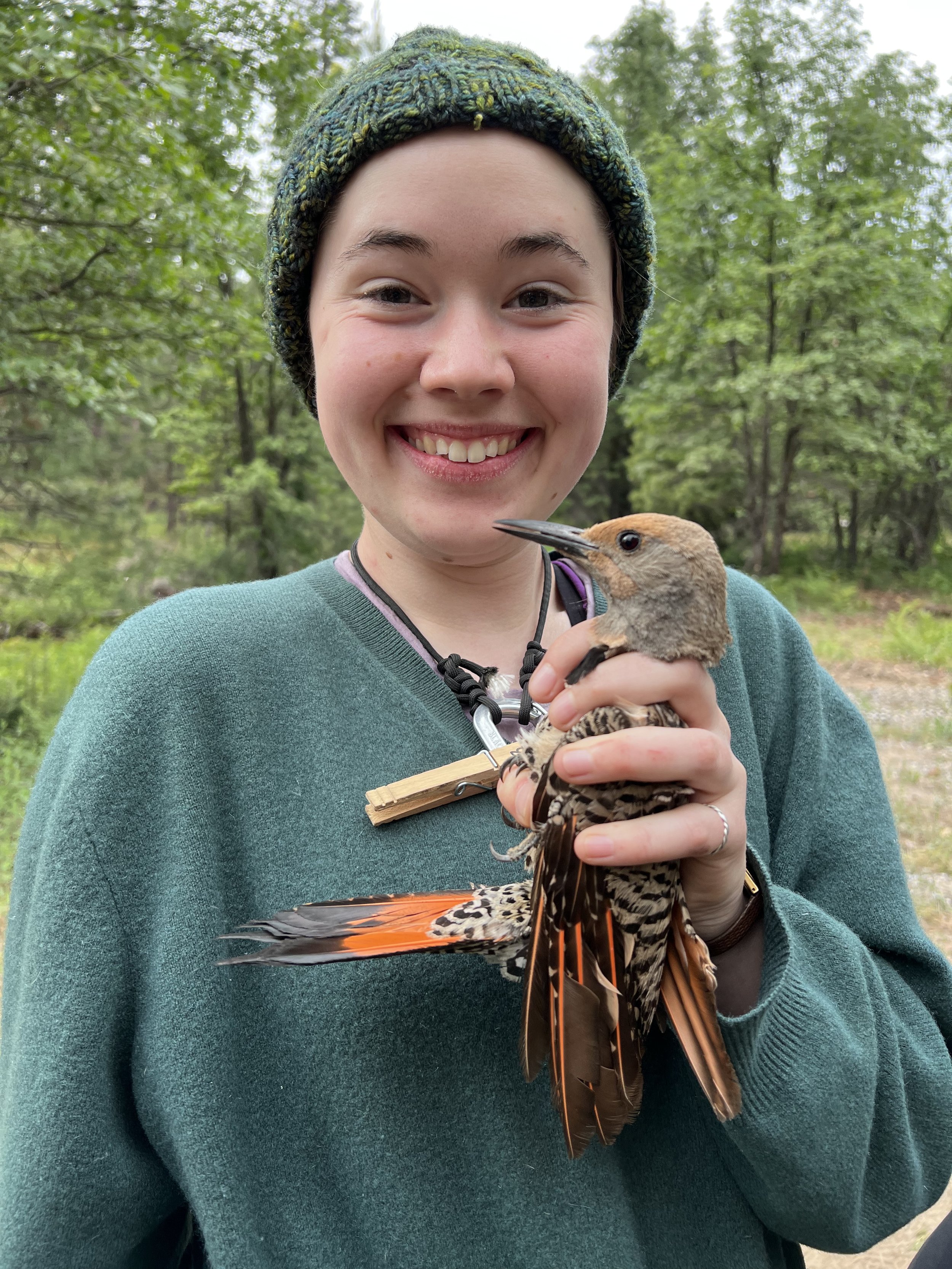
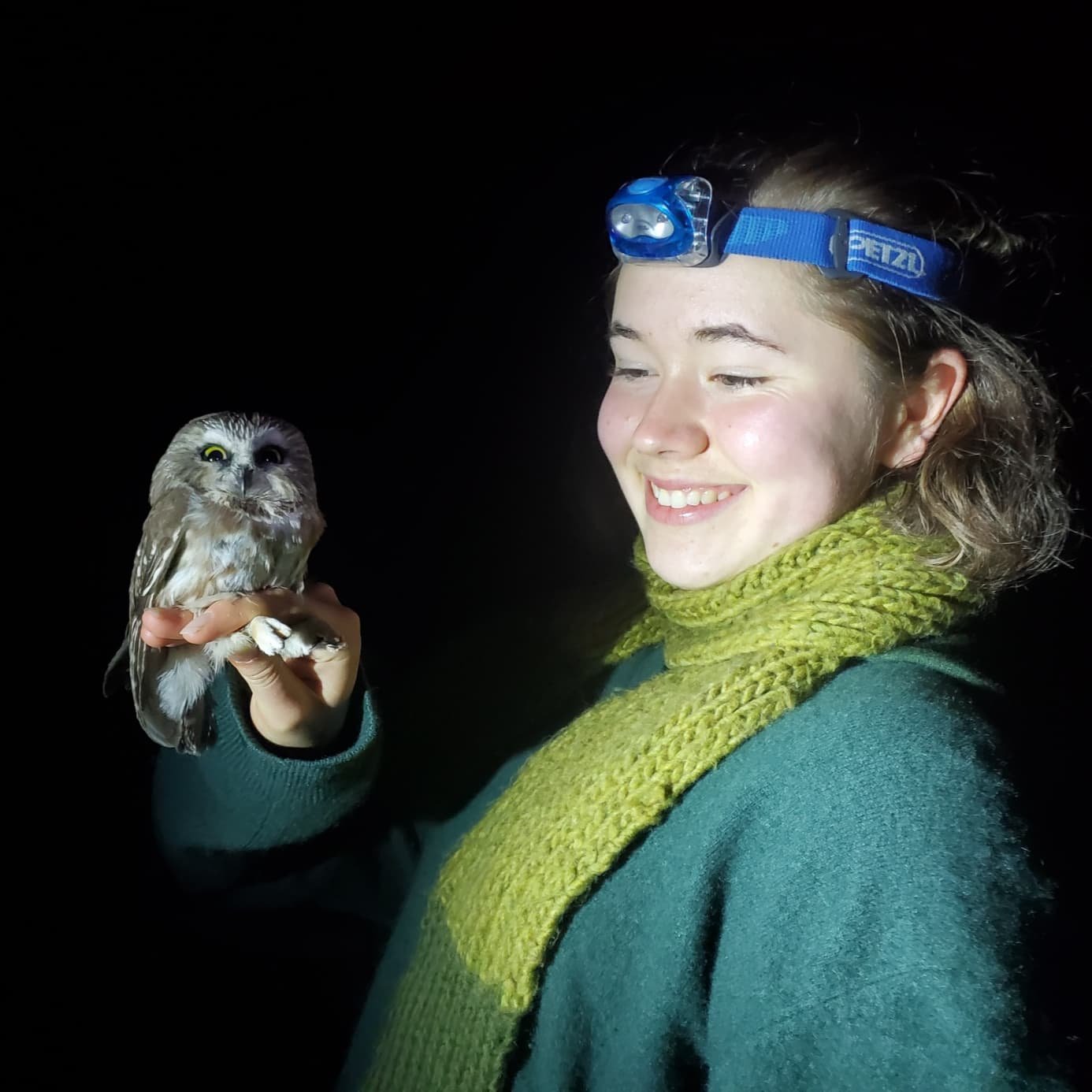
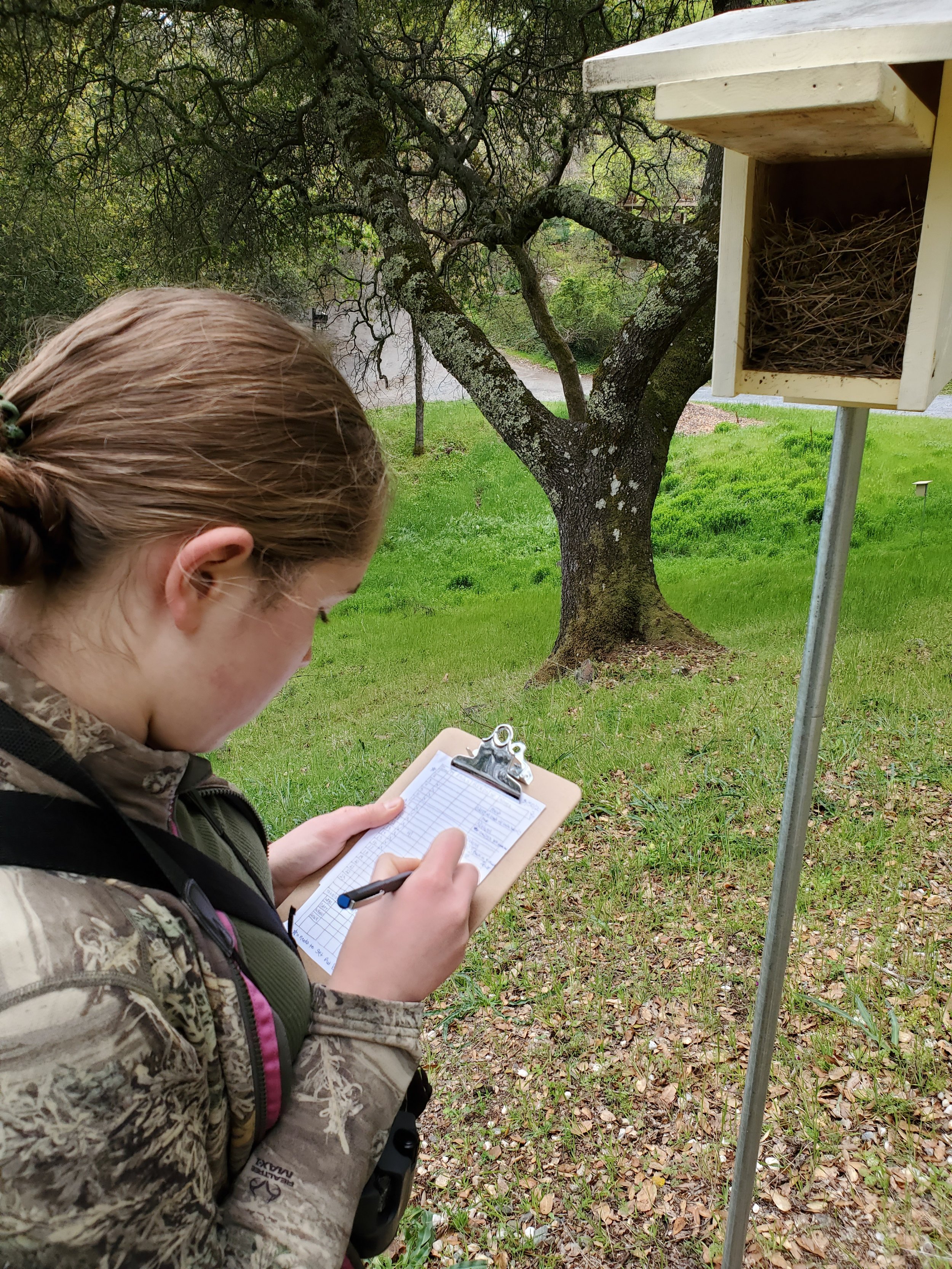
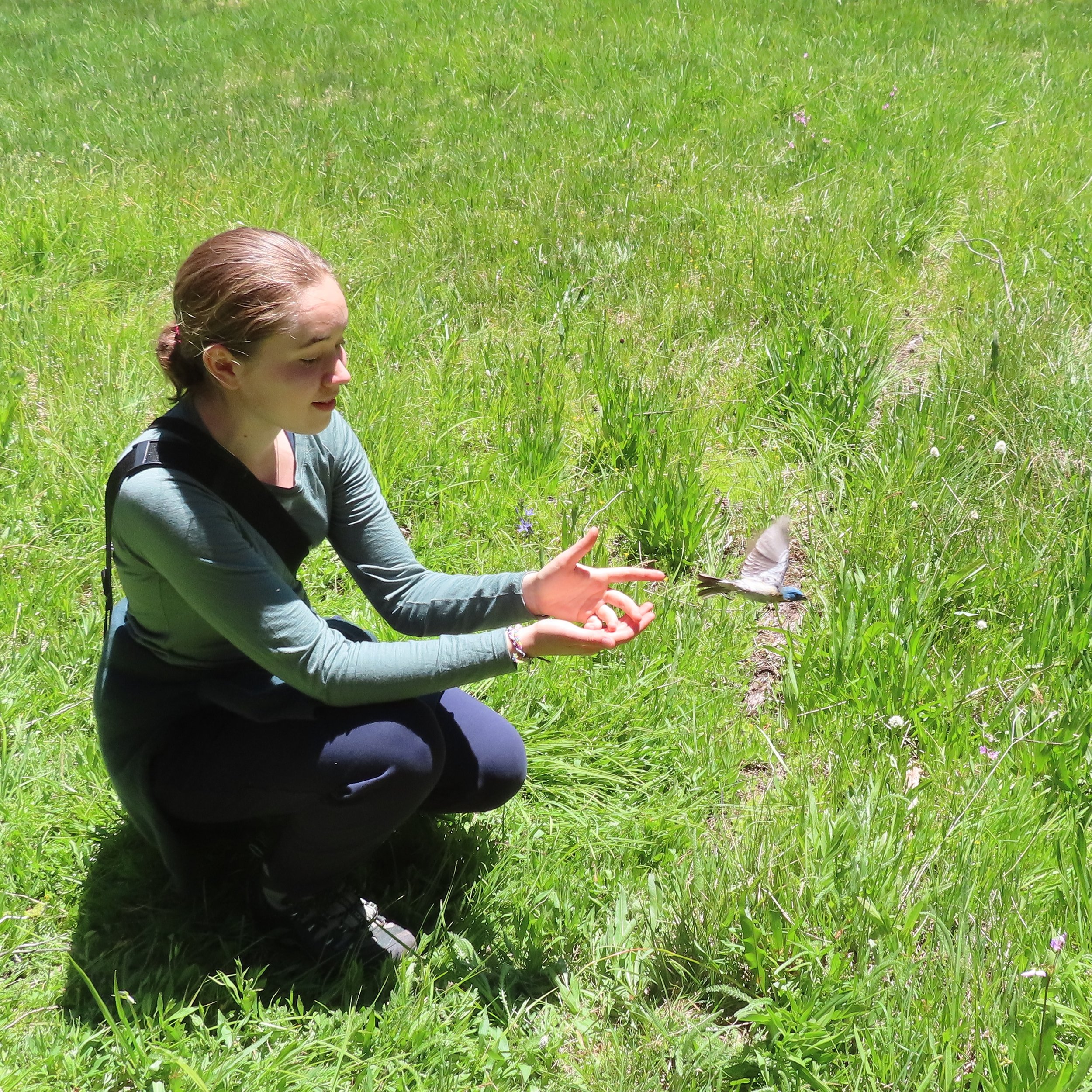

Fiona Gillogly says her love of birds inspired her to volunteer hundreds of hours over the past 6 years to help them. With help from a birding mentor, she installed a series of 20 nest boxes near her home that she monitors for a local Western Bluebird recovery project. This project has given her a new appreciation for how hard birds have to work to create a nest, lay eggs, keep them safe, feed the babies, and help them fledge into adult birds. The project has also given her the opportunity for an up-close look at birds throughout their development, which inspires her as a birder and artist.
In addition, Fiona has spent more than 5 years as a trained volunteer in various bird banding stations, where birds are captured, studied, banded, and released. (Photo note: Birds shown are handled with extensive training and all proper permits.) In the photos above, Fiona holds a Northern Flicker that she banded as a volunteer in Yosemite National Park in 2023. Fiona also volunteered at an owl banding station and was delighted to get to work with a Northern Saw-whet Owl (as seen in photo). She loves to learn more about birds by being able to study them in the hand.
Fiona nature journals about her birding and bird banding work, as you can see in the pages above from her Yosemite 2023 volunteer work. You can read more about Fiona’s experience as a bird bander in this blog post she wrote for the Institute for Bird Populations.
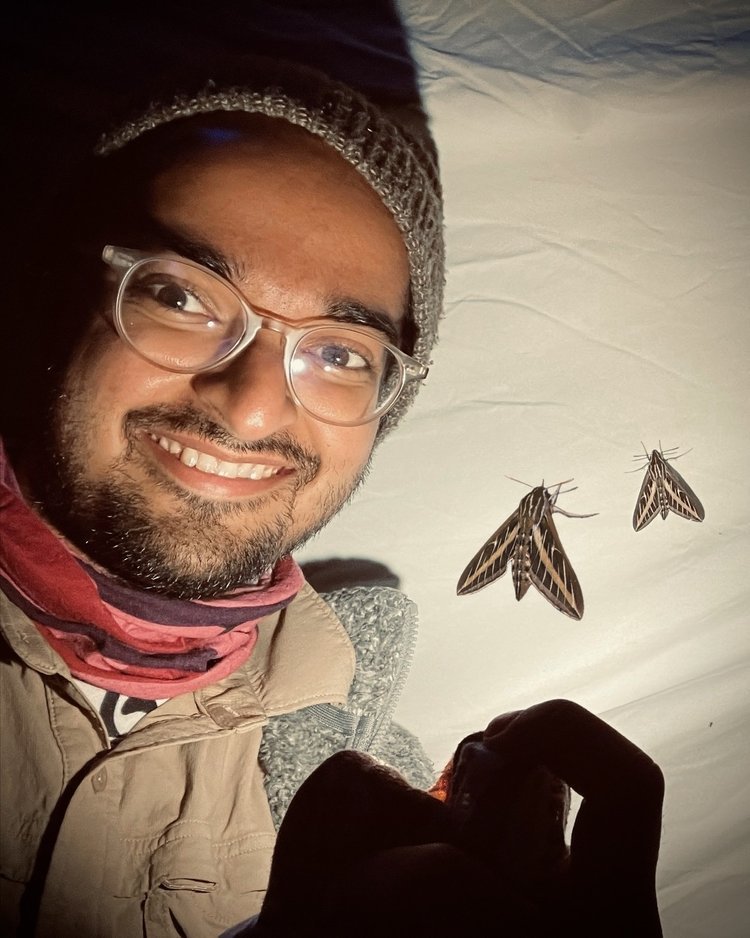
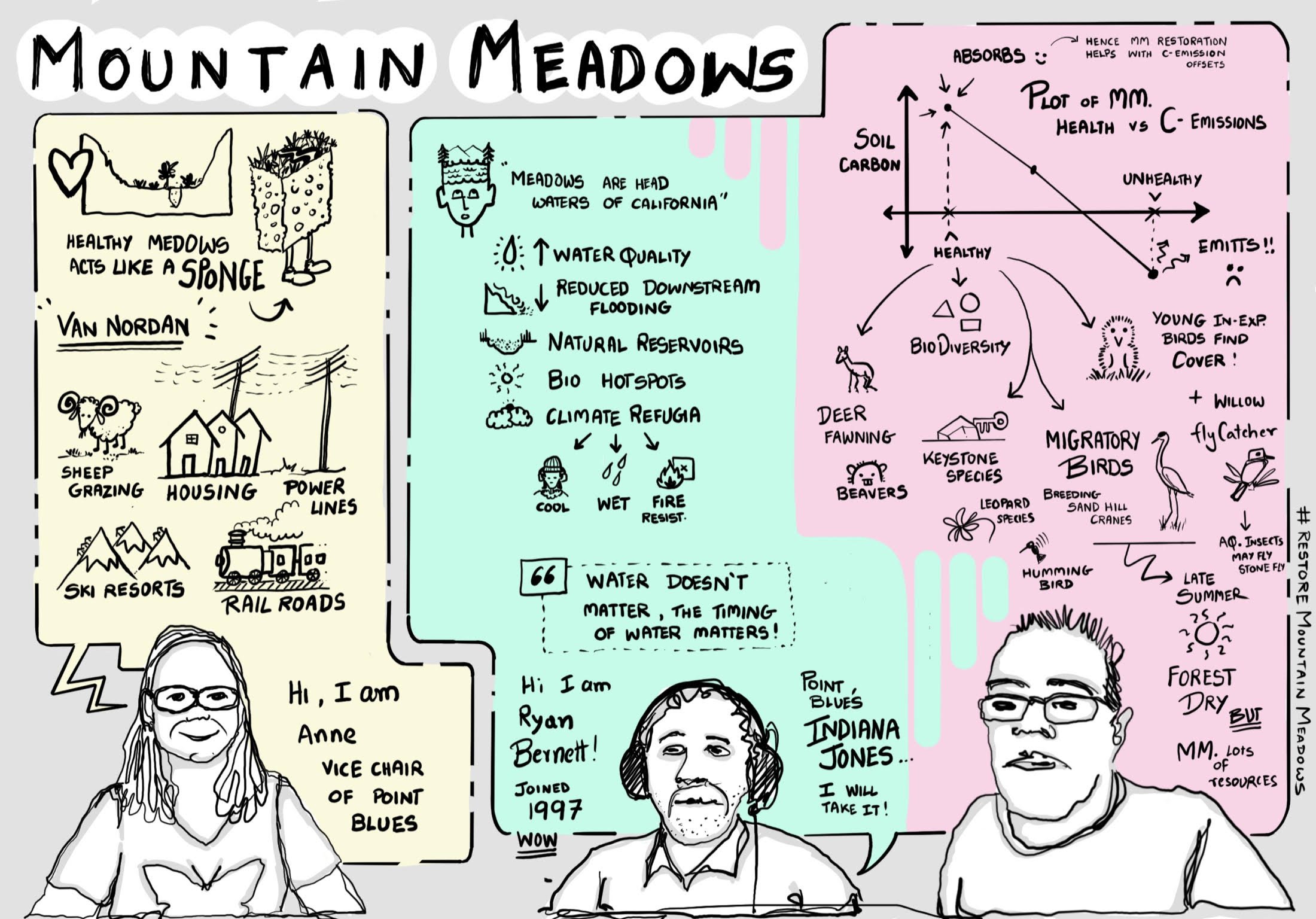
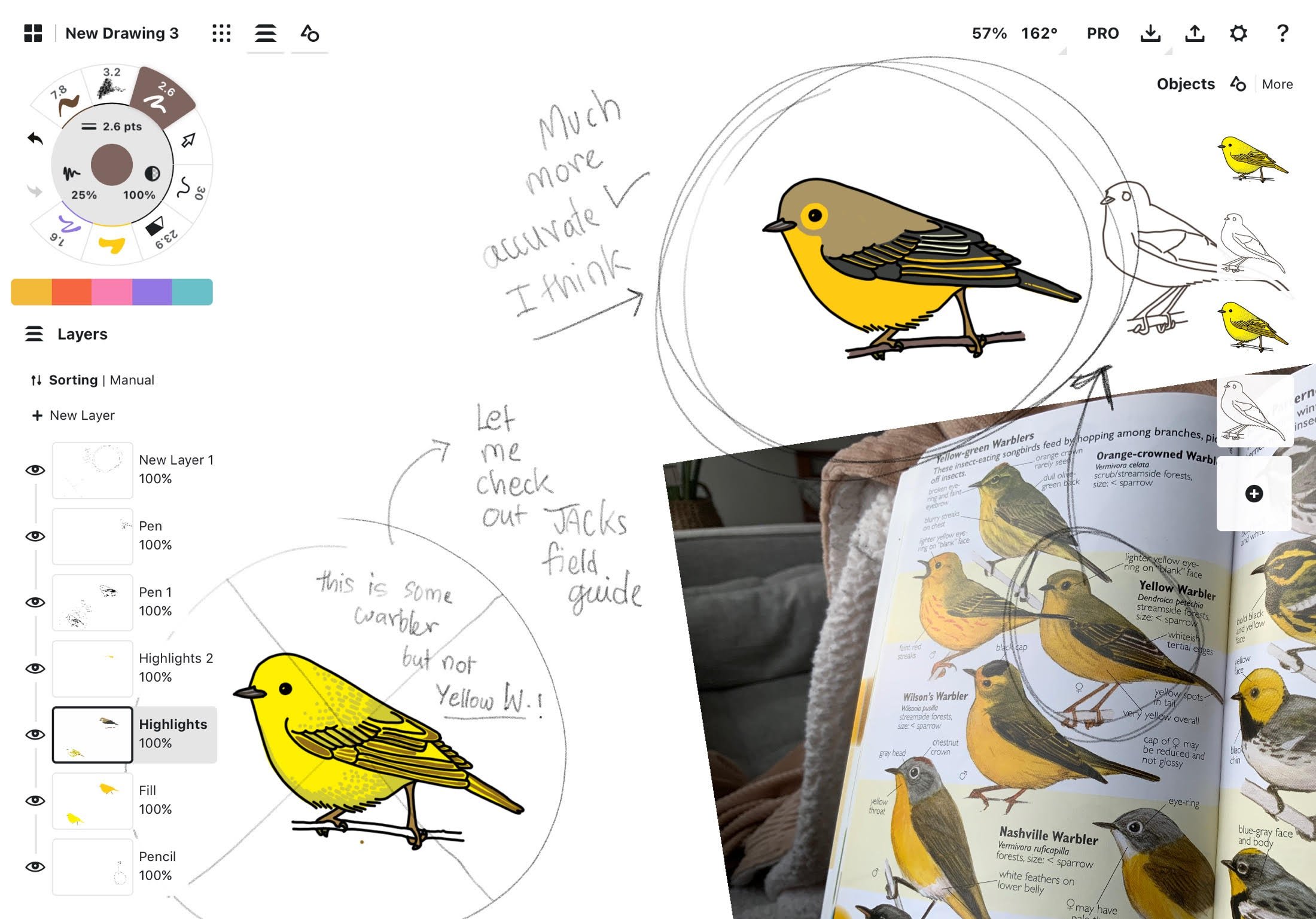
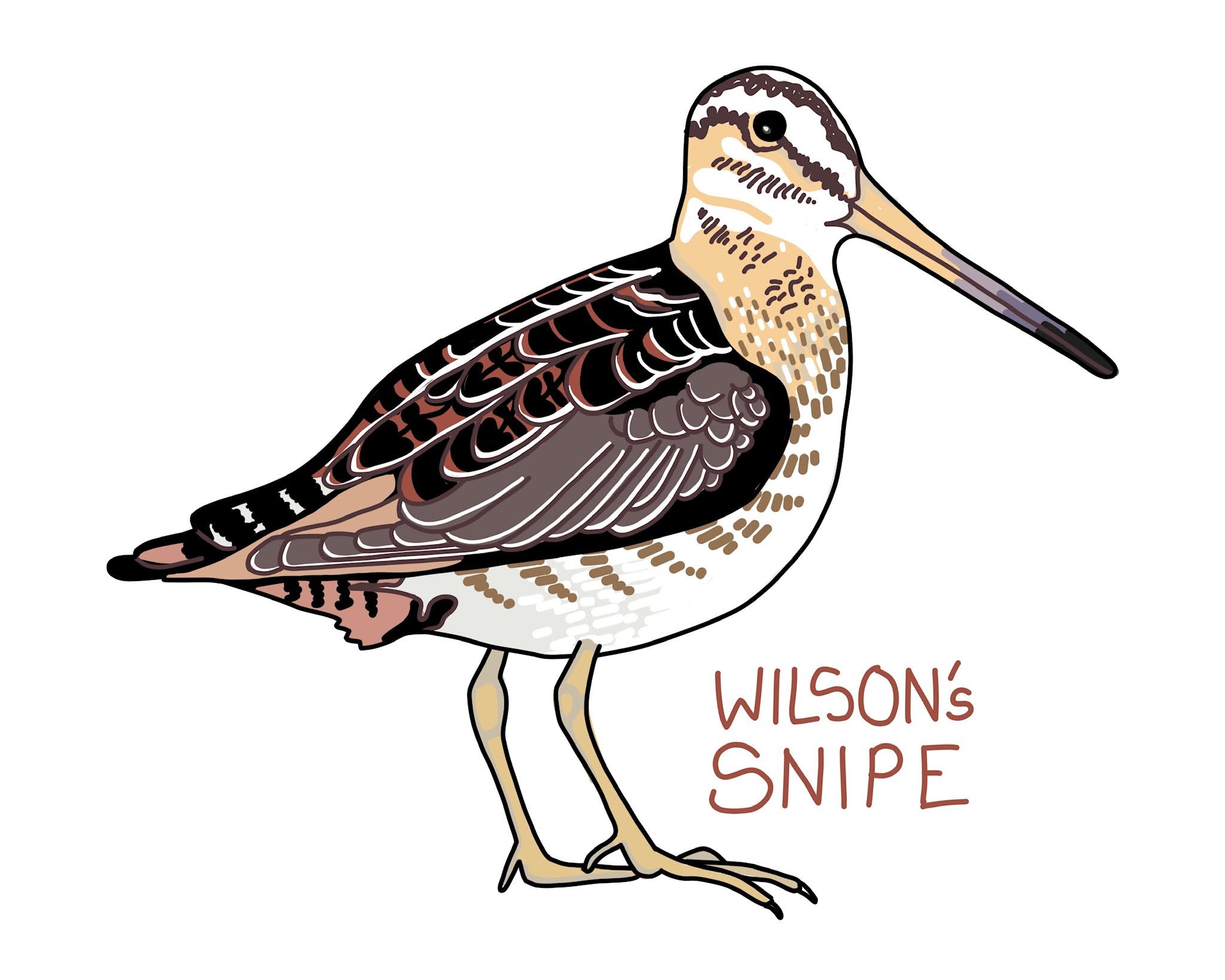
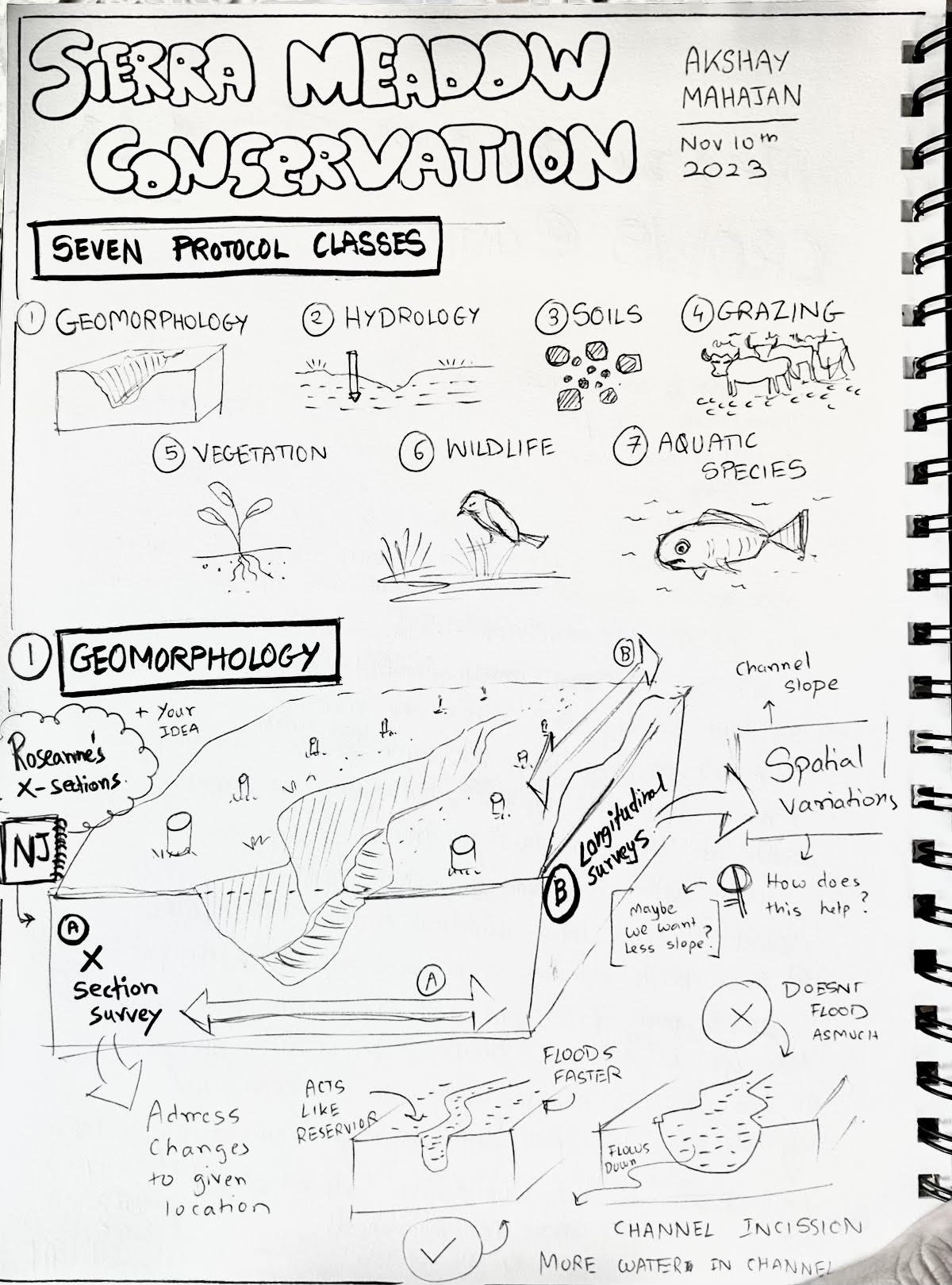
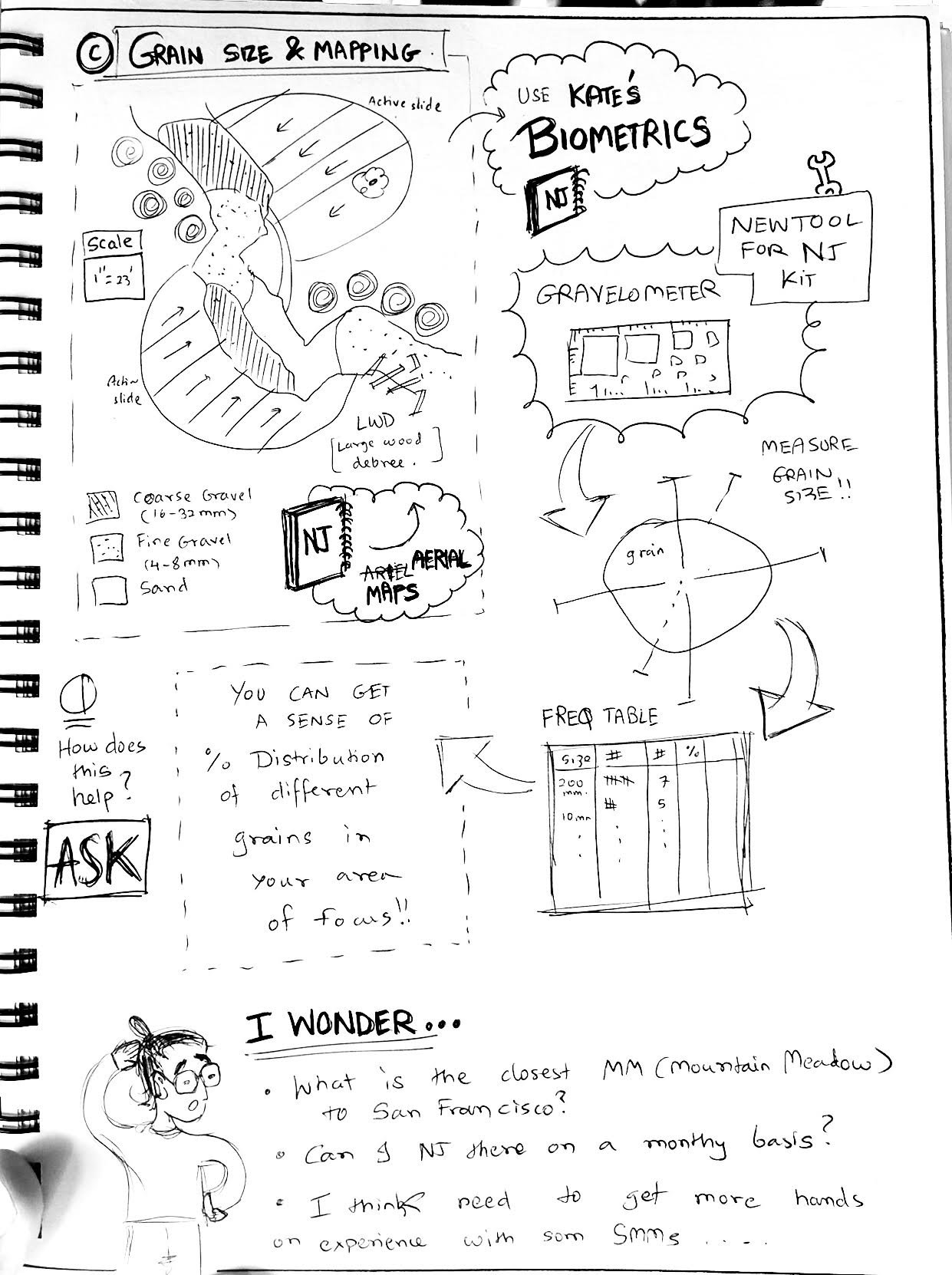
Akshay Mahajan became a member of our Nature Journaling community in 2018, initially focusing on honing journaling techniques and mastering digital illustration skills. Over the years, he seamlessly integrated both aspects to contribute significantly to conservation efforts, particularly focusing on Sierra Mountain Meadow Conservation with Point Blue Conservation Science. His work revolves around the intricate ecosystems of mountain meadows, where he emphasizes the crucial role of shallow groundwater tables and rich organic soils as carbon reservoirs. Akshay highlights the positive feedback loop between moisture-retaining soils and stable formations, fostering habitats for wetland obligate plants like sedges, which act as carbon storage factories. Moreover, he emphasizes the importance of these ecosystems in supporting diverse arrays of wildflowers, providing essential pollinator resources for insects and hummingbirds. Through his involvement with Point Blue Conservation Science, Akshay is actively engaged in various projects. Notably, he is spearheading the creation of a trailhead poster featuring artwork crowdsourced through a collaborative webinar initiative between John Muir Laws/Wild Wonder Foundation and Point Blue. Additionally, he's developing a vector graphics library of Sierra Meadow Conservation illustrations for open-sourcing, aiming to enhance conservation and outreach efforts. Inspired by expert scientists at Point Blue, Akshay envisions bridging scientific data collection techniques with nature journaling practices. He perceives nature journaling as a potent citizen science tool, which, with structured scientific data collection, can evolve into an invaluable resource for climate technology and scientific endeavors. Akshay's dedication to merging art, science, and conservation underscores his commitment to safeguarding our natural world for future generations.
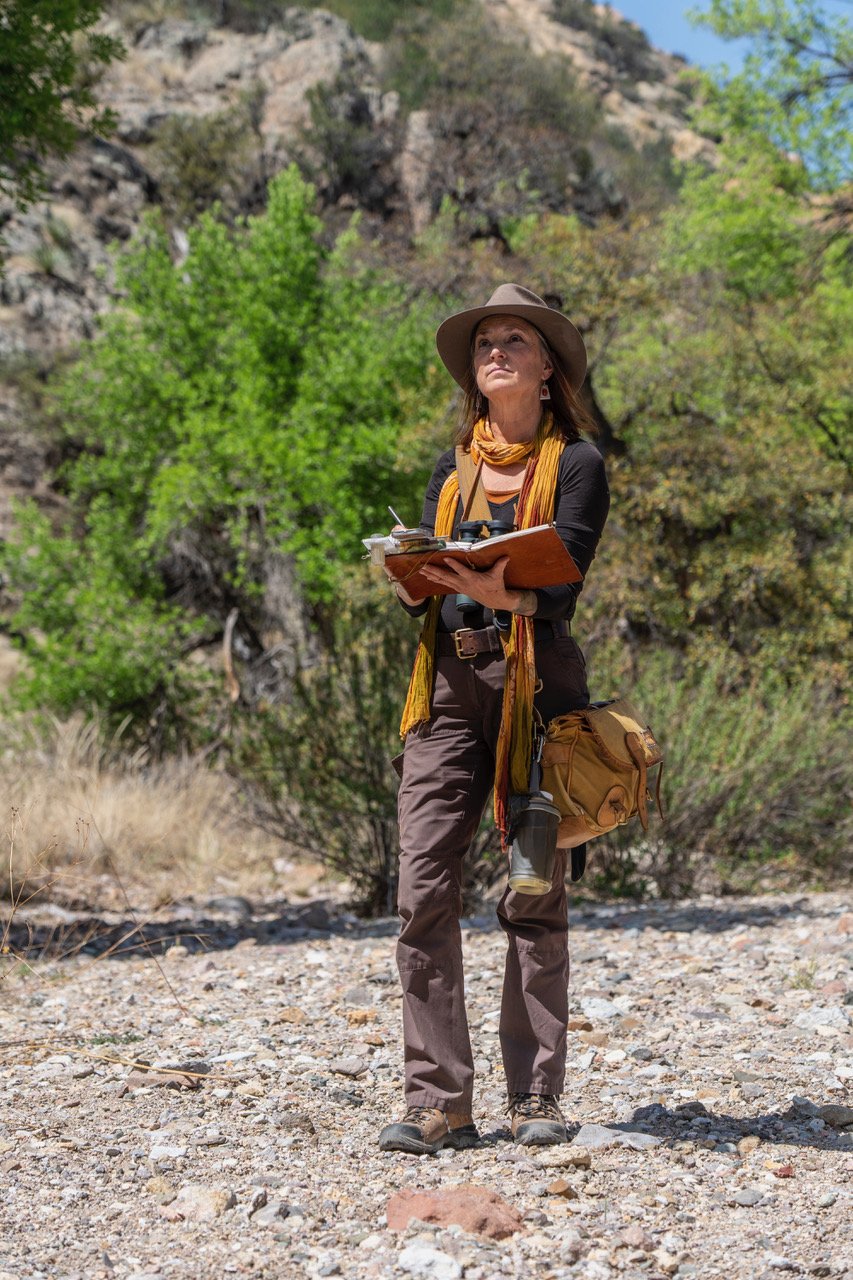
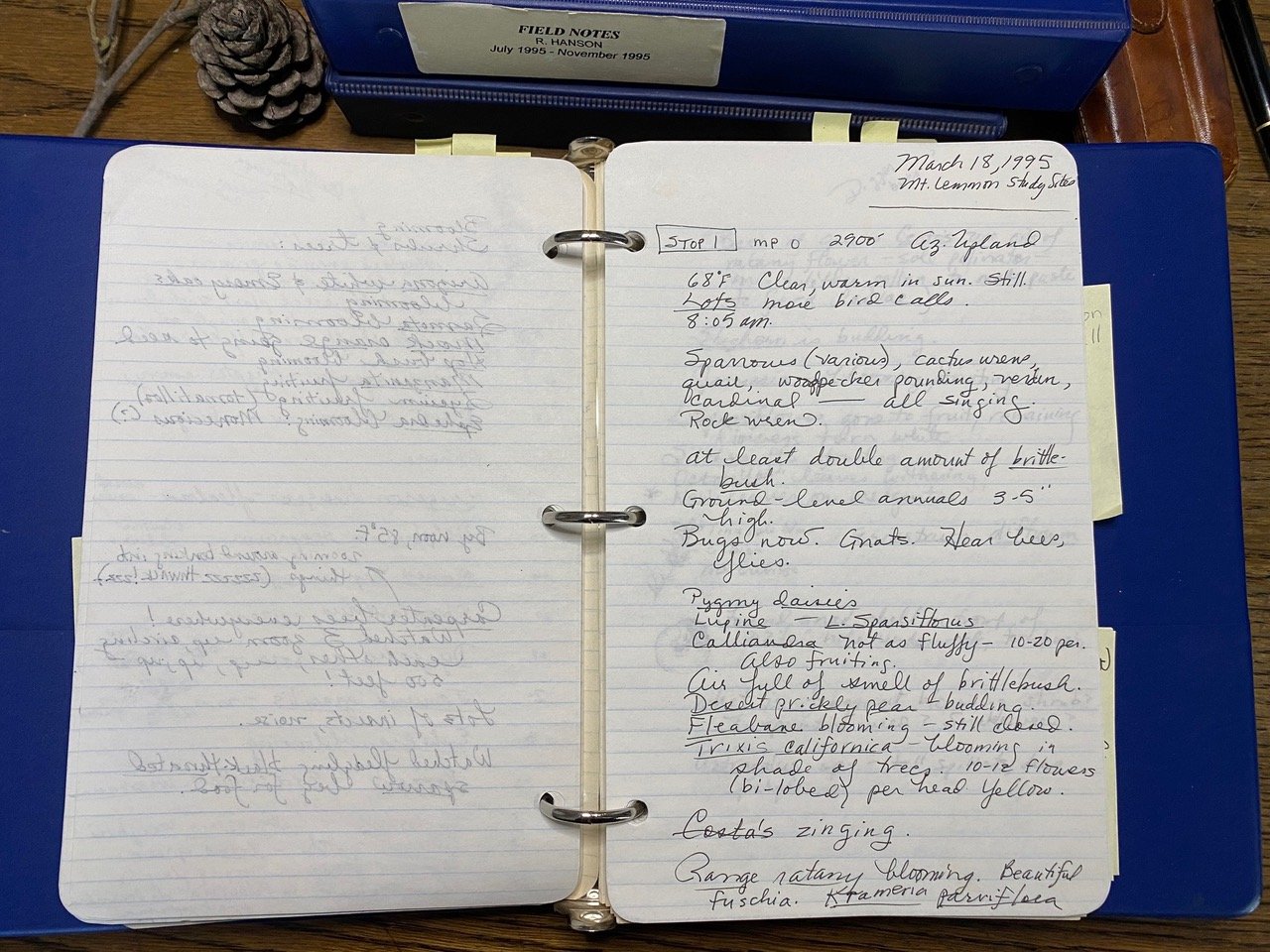
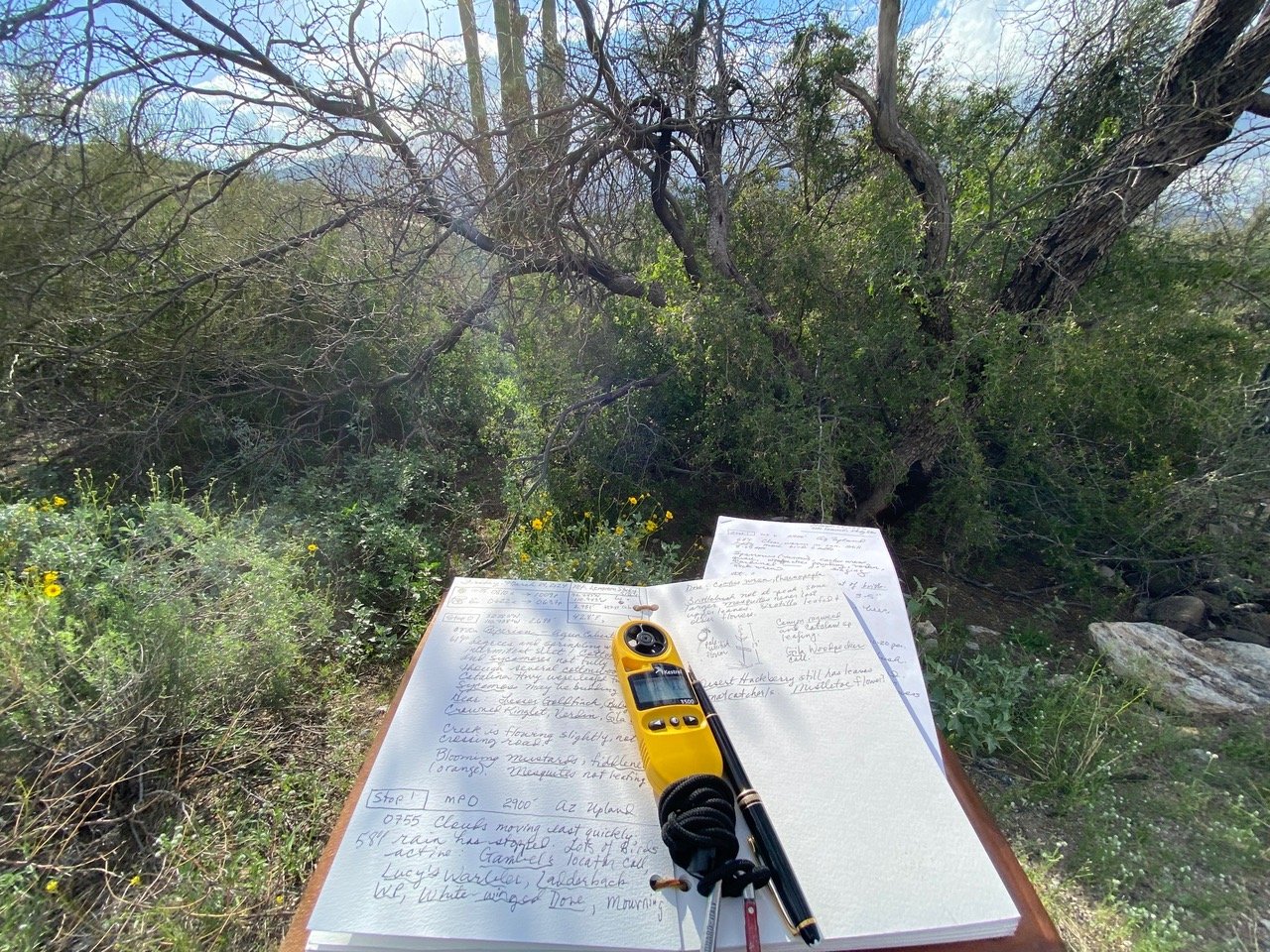
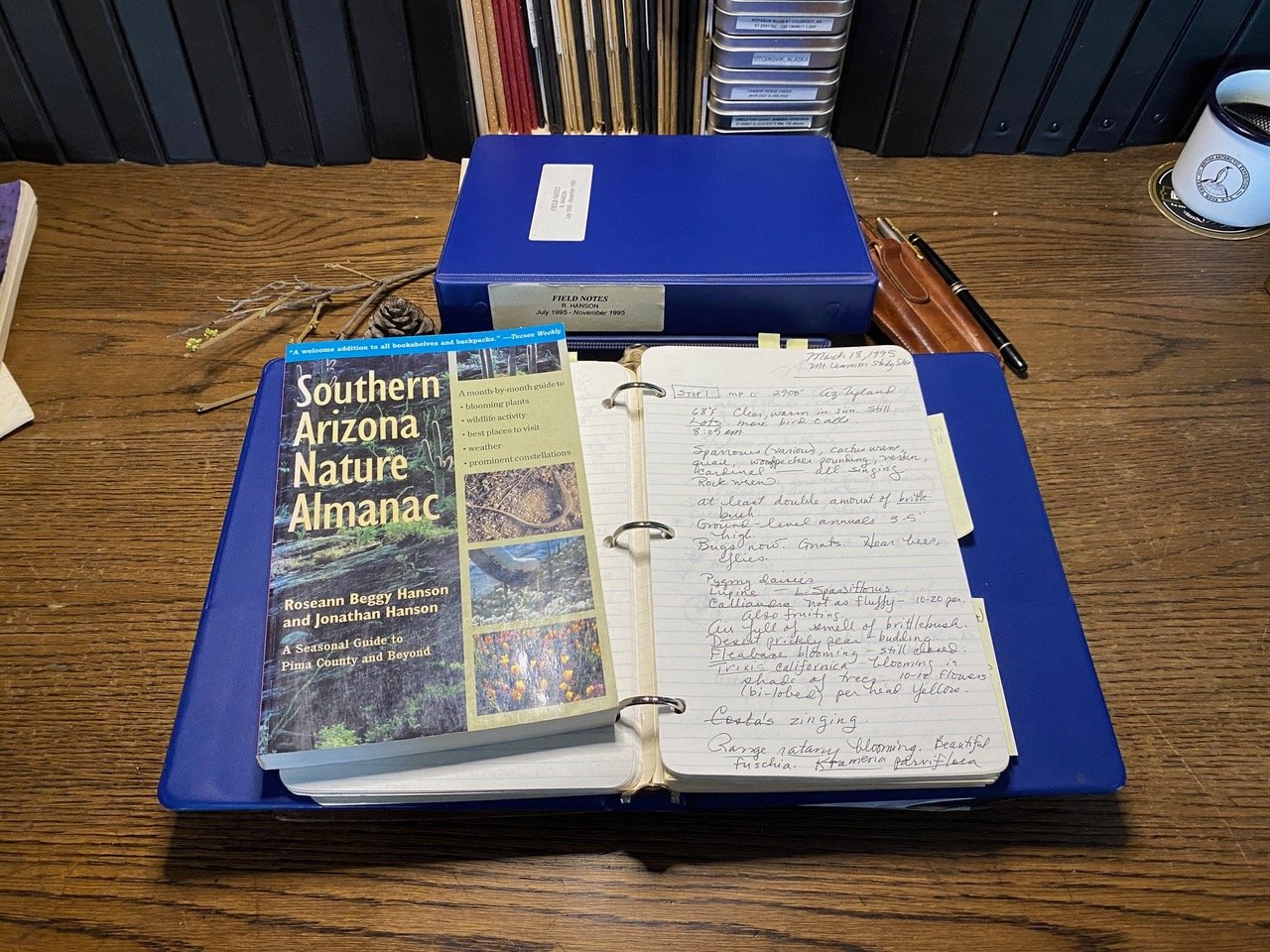
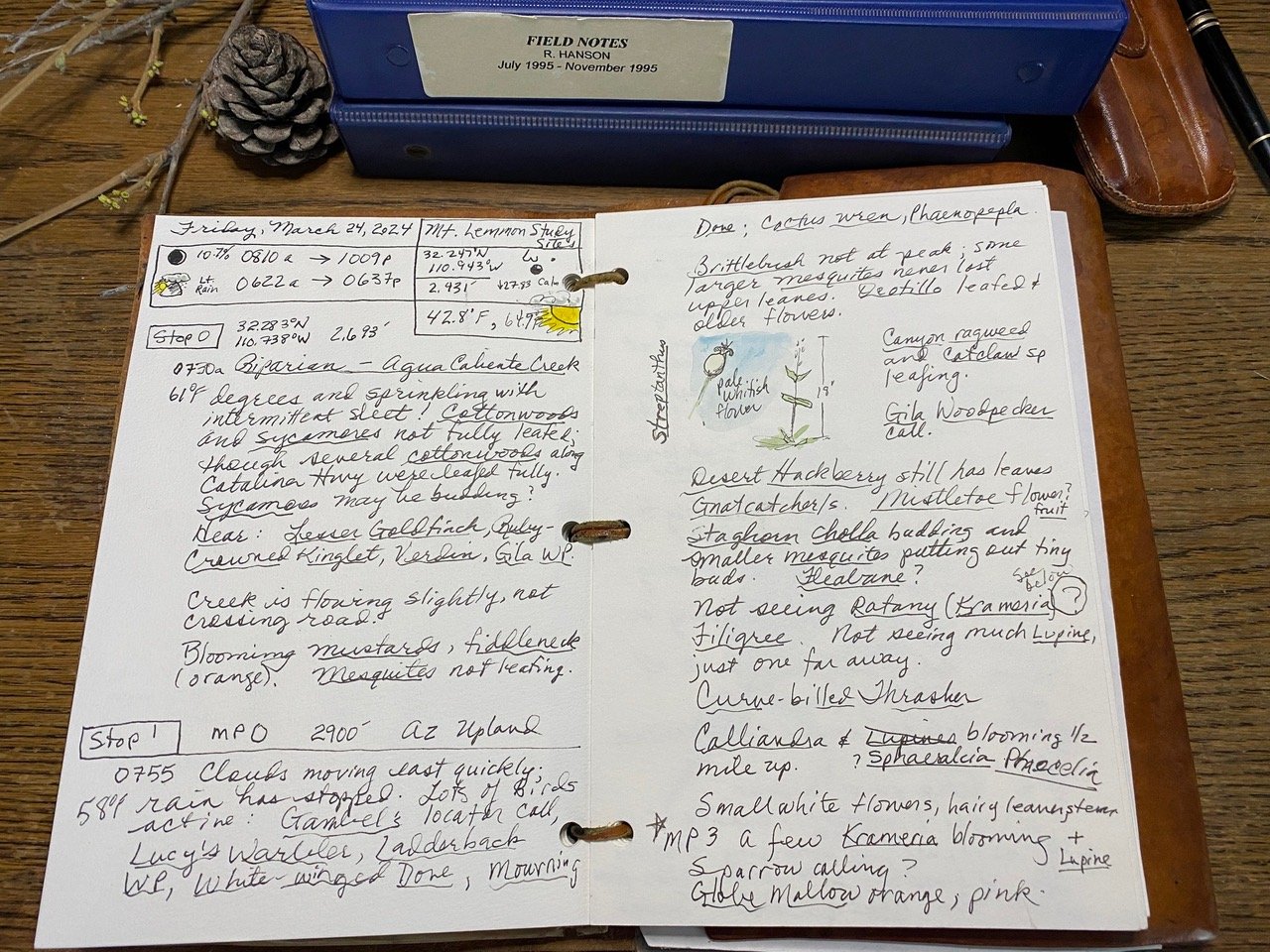
Roseann Hanson has worked around the world as a naturalist, artist, author, and professional conservationist. “I love harnessing visual and verbal communication and scientific data to create works that support conservation of nature,” she says. One of her favorite such projects is the Southern Arizona Nature Almanac, an extensive phenology of the biomes of the region, from desert scrub up to pine-spruce forests. It took years of field research by her and her husband of 40 years, Jonathan Hanson. They set up six transects, one in each biome, and each month recorded all that they could about the lives of the plants, birds, invertebrates, mammals, and reptiles along with weather and astronomy. After compiling several hundred pages of detailed field notes, together the pair wrote and illustrated the Almanac, with each month featuring all that you might expect going on: what birds are arriving or departing or nesting; reptile activity; mammal breeding; plants blooming or fruiting or seeding; what’s going on with the weather and the stars; and suggested places to visit throughout the region to explore nature.
The book is now 27 years old, and it's time for an update, so in 2023 Roseann started re-visiting the field sites each month around the same dates. “The changes are proving to be fascinating,” she says. “For example, 2023 was a much colder spring and had a lot less bird and animal activity than in 1995. Is it climate change or another factor? We learn so much by paying attention, and it can also help alert us to the need to take action if the changes are significant.” She hopes projects such as this nature almanac will inspire others to pay attention, to intimately learn nature that is close by, fall in love, and be inspired to take the next step…and become a steward.


Tara Laidlaw is the Education Program Manager for the Southern Oregon Land Conservancy (SOLC), which has offered nature journaling field trips since 2020, helping local K-12 students build relationships with the land and setting them up to become the next generation of environmental caretakers. The field trips invite students onto protected lands, where they use nature journaling to practice scientific, ecological, and social-emotional literacy skills. SOLC also uses nature journaling to support stewardship activities such as invasive species removal and endangered flower census. When students (or adults!) take 10 minutes to journal about a target species, they can then move through the field with confidence, easily identifying the particular species even among diverse plant communities.
“Nature journaling has become the foundation for SOLC's education programs for a number of reasons,” says Tara. “It doesn't require any special tools or equipment, it's adaptable enough to meet the needs and abilities of very diverse students with very little additional lesson planning, it can supplement a huge range of topics that students are working on in the classroom, and it's a fabulous tool for responding to the magical ‘teachable moments’ that nature always seems to provide. What's not to love about a teaching framework that supports academic, ecological, and social-emotional literacy all at the same time? It also provides excellent structure for stewardship and restoration activities, both with youth and with adults,” she says.
